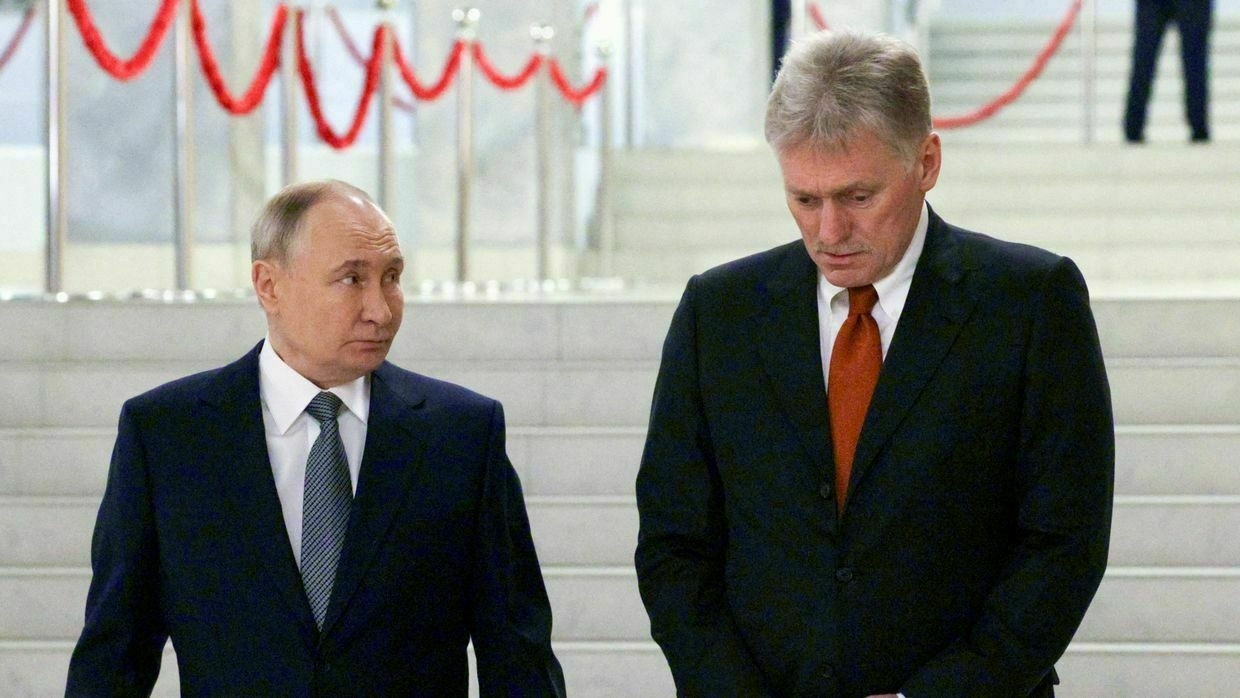-
In Kyiv, skepticism about ceasefire reigns as Russia ramps up deadly attacks and US remains mute
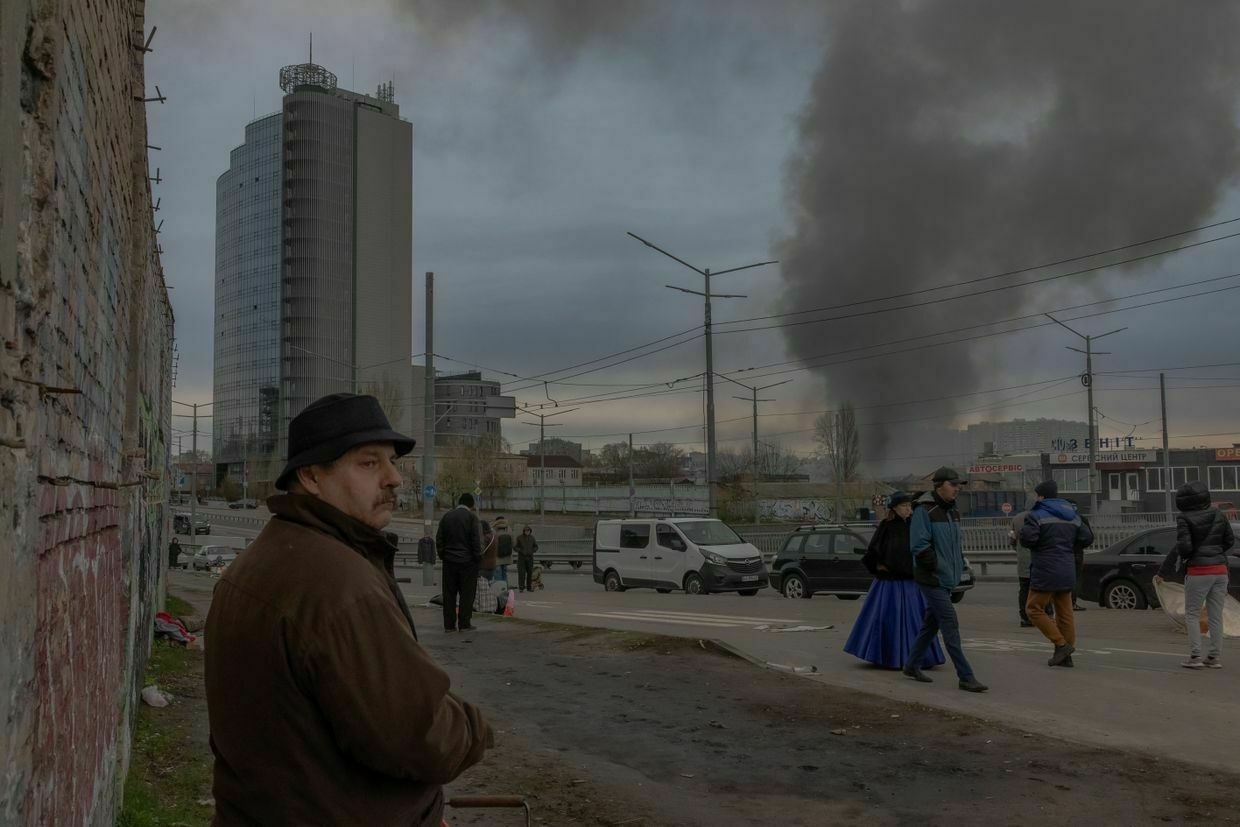
Following weeks of loud statements and attempts at diplomacy, the lack of clarity feels unsettling.
Ukraine had agreed to a full ceasefire and got nothing in return. Russia had refused to comply. Over the past week, Russia further escalated its attacks on Ukrainian cities, killing dozens of civilians, among them children.
The White House, which prioritized stopping the killings in Ukraine, remained notably mute.
“I don’t know what’s happening there,” U.S. President Donald Trump said on April 7, though he added he was “not happy… with the bombing.” But has so far the White House has not taken any concrete action to pressure Russia into a ceasefire.
As a result of the grueling uncertainty, people on the streets of Kyiv and those in high cabinets say they don’t believe a ceasefire can be achieved in the foreseeable future, nor that the U.S. can help bring one as it had promised.
“What kind of peace talks can there be?” Oksana, a 47-year-old cashier in Kyiv, asked.
“They announced a ceasefire dealing with the energy system, and on the same day started hitting civilians, people, and residential buildings,” she told the Kyiv Independent a day after yet another Russian missile strike on Kyiv kept her awake throughout the night, worried for her children.
Like other Kyiv residents interviewed, Oksana remained skeptical of diplomatic efforts with Russia, saying that “the Russians will go to the negotiation only if it meets their conditions 100 percent."
“This is Russia’s way of showing its true intentions — to continue terror as long as the world allows it.”
The rising skepticism among Kyivans comes as President Volodymyr Zelensky calls for a tougher Western response, stressing that "the pressure on Russia is still not enough."

Oksana, a 47-year-old cashier in Kyiv, Ukraine on April 7, 2025. (Yuliia Taradiuk) "This is Russia's way of showing its true intentions — to continue terror as long as the world allows it," Zelensky said in a Telegram post on April 6.
Oleksandr Merezhko, head of the parliament's Foreign Affairs Committee and a lawmaker from Zelensky's Servant of the People party, believes that people in Kyiv have "more and more disappointment and less and less illusions about the possible ceasefire."
"We see that initially, people had some hope that maybe before Easter, as Trump wanted, there would be a ceasefire," Merezhko told the Kyiv Independent.
"But with each day, this hope diminishes," he added, referring to the growing number of deadly attacks.
Zelensky, whose hometown of Kryvyi Rih in central-eastern Dnipropetrovsk Oblast suffered a missile strike on April 4 that saw at least 20 killed, including nine children, stressed that the Russian attack numbers were growing.
On April 6, an overnight Russian ballistic missile strike on Kyiv killed at least one and wounded three.
Russian troops have launched over 1,460 aerial bombs, almost 670 drones, and over 30 missiles of various types against Ukraine during the past week, according to Zelensky.
Merezhko dashed the feasibility of a potential ceasefire with Russia, saying that Russian President Vladimir Putin does not appear interested in such a deal. The lawmaker explained that Putin continues to put forward "absolutely unacceptable demands and conditions."
Earlier in March, Ukraine agreed to the U.S.-proposed 30-day ceasefire. Russia has so far rejected the proposal, demanding that Ukraine be barred from receiving Western military aid and mobilizing and training new troops.
Among the latest demands, Putin said he would favor a change of government in Ukraine to continue talks.
Trump has thus far insisted on Putin's commitment to the potential truce, trying to end the war in Ukraine by pressuring Kyiv instead of Moscow.
Ukrainian officials say Putin doesn't want peace and is using the time to inflict more damage.
"What we see from his actions: he continues to kill civilians, including children in Kyiv," Merezhko said.
"So judging not by his words but his actions, he has no intentions to have any reliable, stable, sustainable ceasefire."
"Ukrainian society has long had no illusions about the sincerity of Russia's intentions," according to Dmytro Fomin, former public opinion researcher at the Center for Content Analysis.
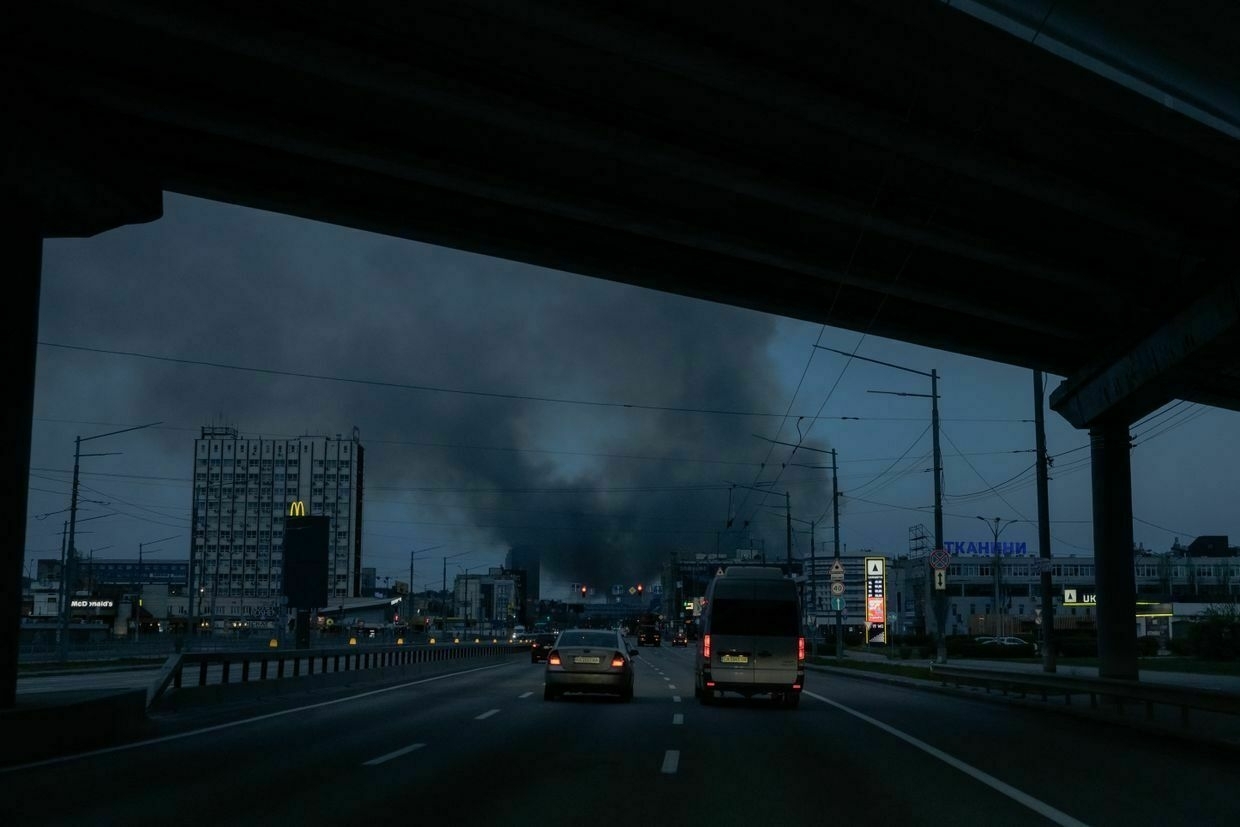
Cars drive on a road as smoke rises in the distance following a Russian missile attack in Kyiv, Ukraine, on April 6, 2025. (Roman Pilipey / AFP via Getty Images) 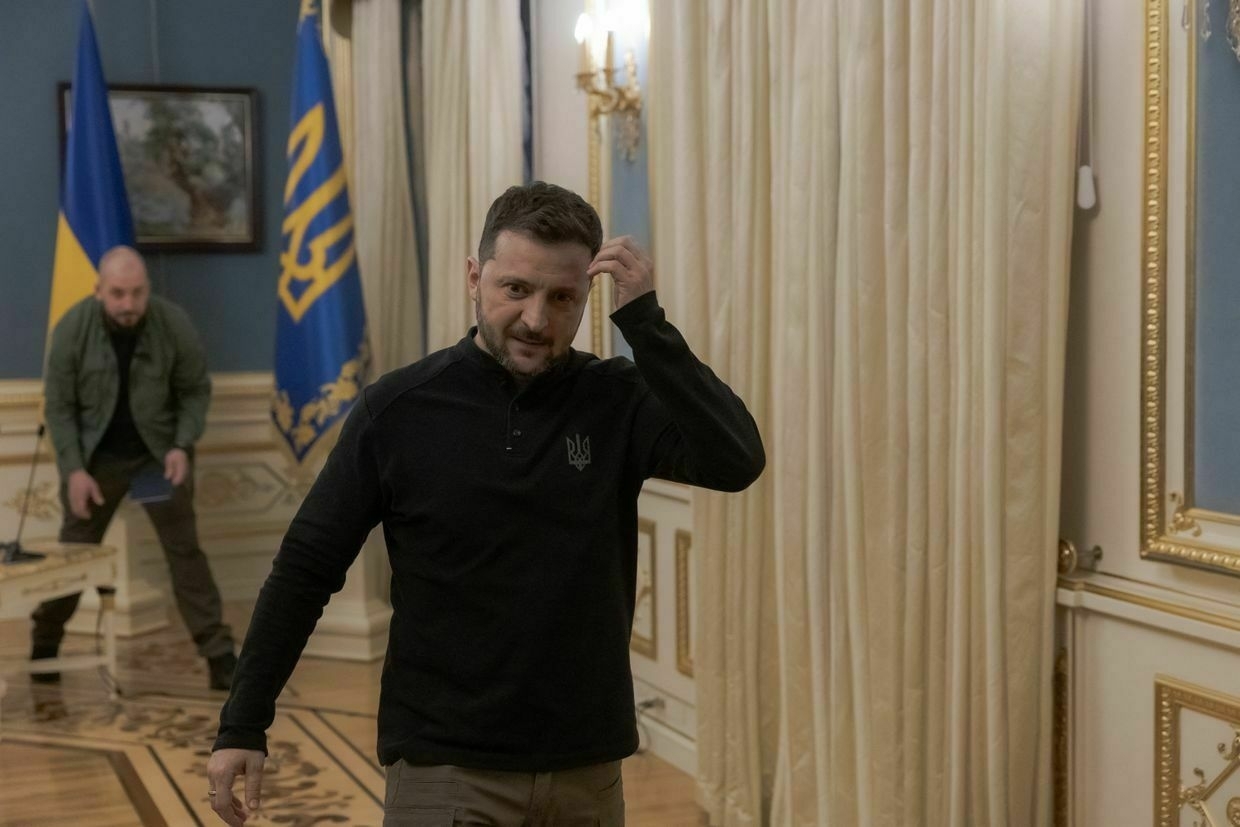
Ukrainian President Volodymyr Zelensky leaves after a press conference in Kyiv, Ukraine, on April 4, 2025. (Roman Pilipey / AFP via Getty Images) Mykyta Poturayev, head of the parliament's Humanitarian and Information Policy Committee and Vice-President of the OSCE Parliamentary Assembly, said, "There is no room to discuss ceasefire" when Putin doesn't want to stop the war.
Poturayev said it is difficult to make predictions when no one knows the potential decisions that the U.S. could make in the coming months regarding the war.
"Nobody knows what the position of the U.S. will be in the long run," Poturayev told the Kyiv Independent.
Peace talks began when Trump abruptly declared the start of negotiations to end the war in Ukraine after a phone call with Putin in February. Since then, Trump's team has met with both the Russian and Ukrainian delegations in hopes of ironing out conditions for a potential agreement.
The U.S. took a sharp policy shift in early March, temporarily freezing its military aid and intelligence sharing to Ukraine following a heated Feb. 28 Oval Office clash between Trump, his Vice President JD Vance, and Zelensky.
Following a series of Russian attacks on Ukrainian cities over the past week, Trump reiterated his calls for a ceasefire and said, "I don't like the bombing."
"We are talking to Russia. We would like them to stop," Trump told reporters on April 6.
Olexiy Haran, politics professor at the Kyiv Mohyla Academy, said the intensified attacks may be Russia's intent to "maximize the stakes" and possibly to show it to Trump in particular.
"The question here is how we can break the Russian position — the only thing (that can) is pressure," Haran told the Kyiv Independent.
"But (Trump) is not doing anything right now."
Poturayev was more optimistic.
"With every day, we (Ukraine, the U.S., and Europe) have a more and more common understanding of the situation of Russia's real position," Poturayev said.
People who spoke with the Kyiv Independent, however, don't expect this to lead to any sort of result.
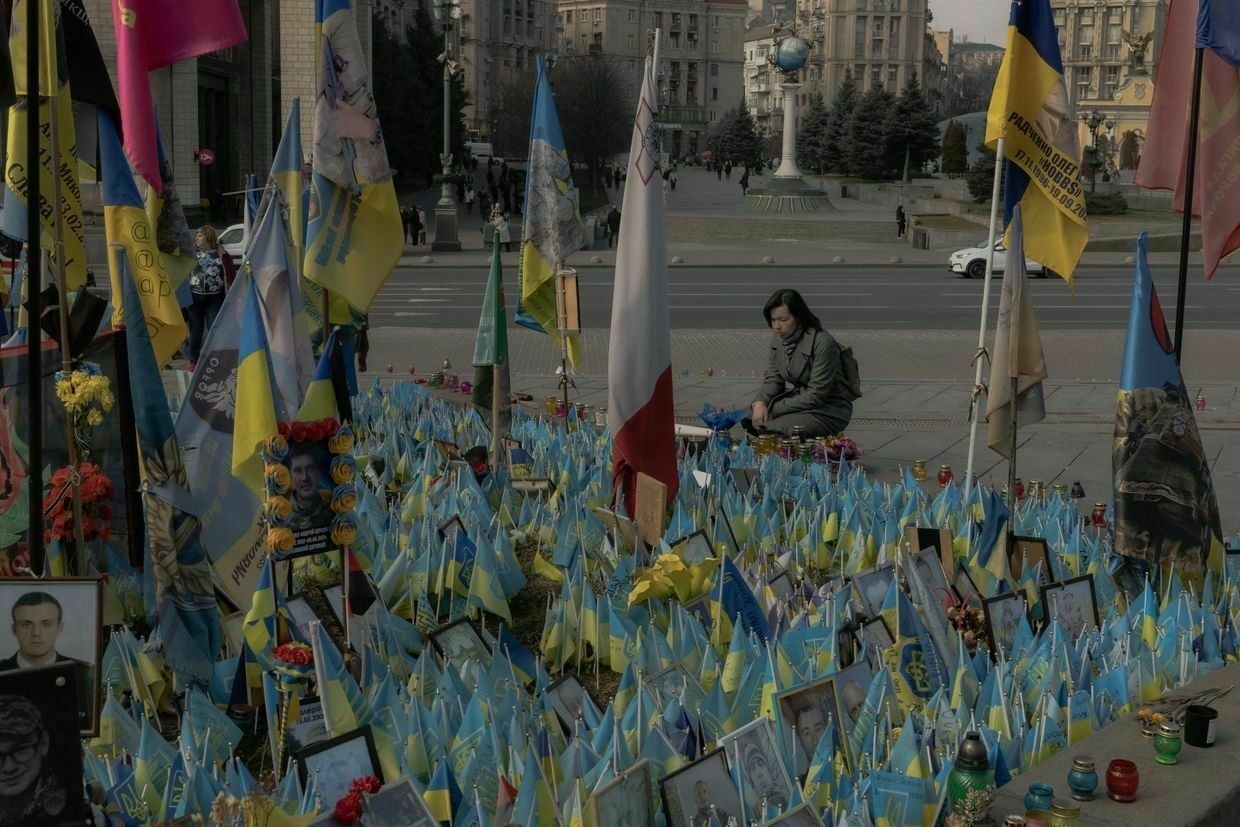
A woman visits a makeshift memorial for fallen Ukrainian and foreign fighters on Independence Square in Kyiv, Ukraine, on March 11, 2025. (Roman Pilipey / AFP via Getty Images) Does Trump have red lines with Russia? The question has experts stumpedHe’s been “pissed off,” “not happy,” and “very angry,” but so far, U.S. President Donald Trump is yet to take any concrete action to force Russian President Vladimir Putin to agree to a full ceasefire. Trump has multiple forms of leverage he could use against the Kremlin — increasing militaryThe Kyiv IndependentChris York
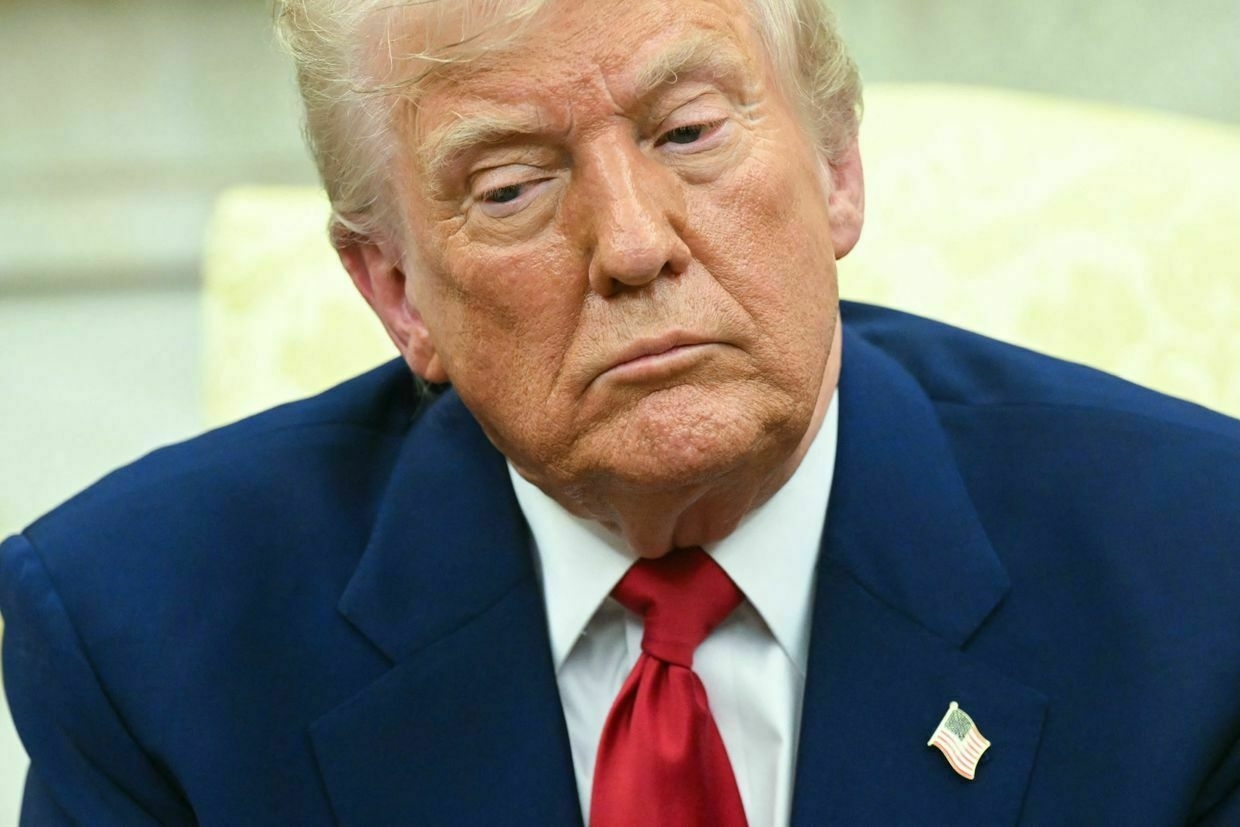
-
Does Trump have red lines with Russia? The question has experts stumped
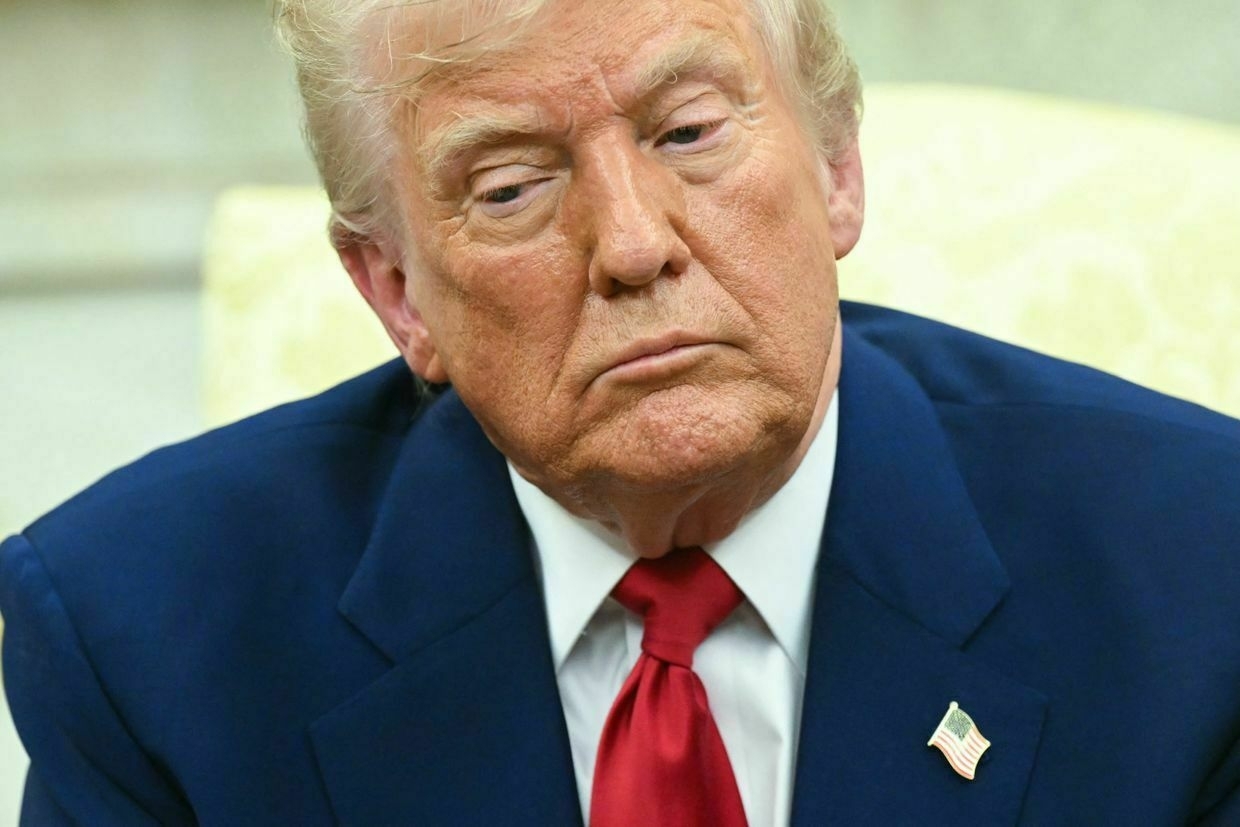
He’s been “pissed off,” “not happy,” and “very angry,” but so far, U.S. President Donald Trump is yet to take any concrete action to force Russian President Vladimir Putin to agree to a full ceasefire.
Trump has multiple forms of leverage he could use against the Kremlin — increasing military aid to Ukraine, strengthening the enforcement of existing sanctions, or imposing additional tariffs on countries that buy Russian oil.
So far, Trump has used none of it, and aside from a few angry statements, he is letting Putin wage war unabated.
Trump took office vowing to bring a swift end to the war in Ukraine, plans that Kyiv was eager to get on board with.
Ukraine agreed to a U.S.-proposed full 30-day ceasefire on March 11, saying it was ready to take such a step if Russia also agreed to the terms.
To date, and nearly one month later, Russia has refused.
Instead, Moscow agreed to a partial energy ceasefire in the Black Sea and in relation to strikes on energy infrastructure — two theaters of the war in which Ukraine has been pummelling Russia.
Meanwhile, Russian missile and drone attacks against Ukraine have continued in devastating fashion — one strike in Kryvyi Rih on April 4 killed 20 people, including nine children.
“I’m not happy about what’s going on with the bombing because they’re bombing like crazy right now,” Trump said on April 7 at the White House.
“They’re bombing — I don’t know what’s happening there."
We asked three experts if Trump actually has a red line with Russia and what they think it would take for him to finally take action against the Kremlin.
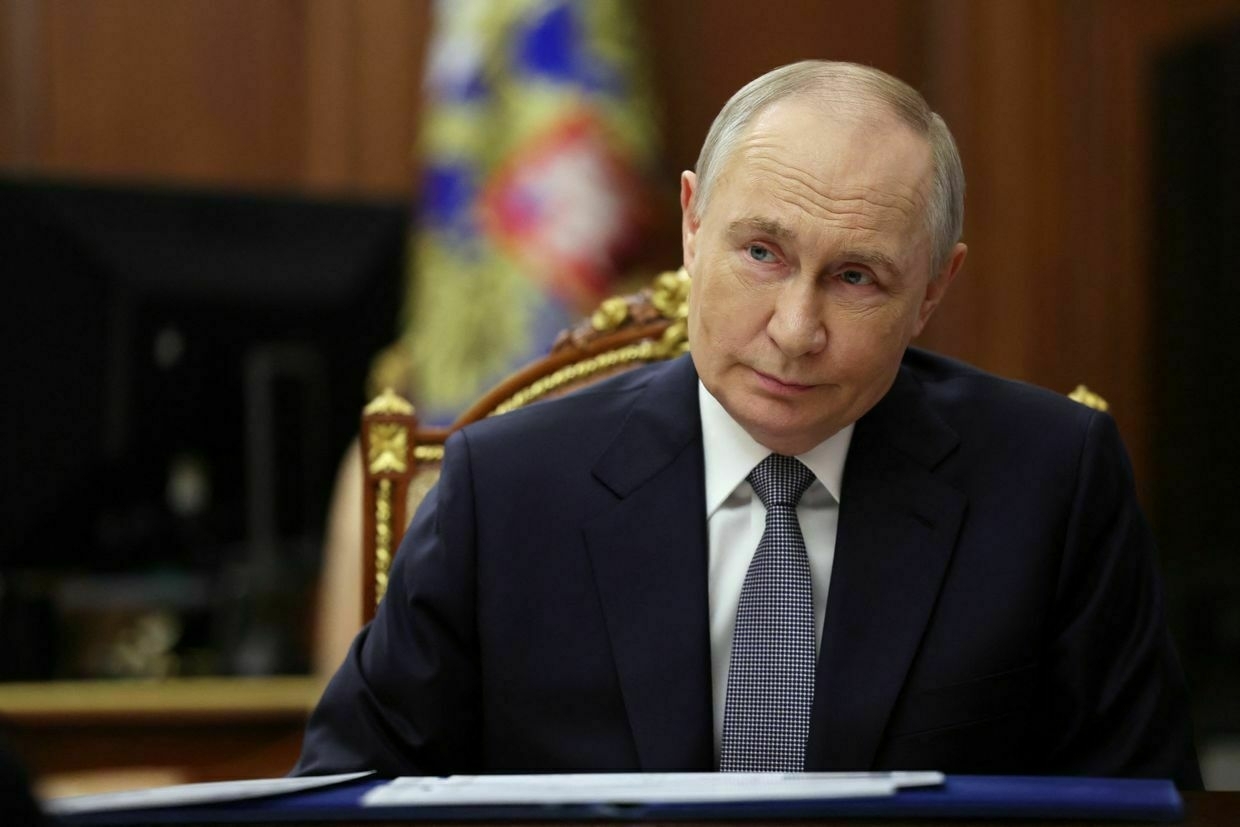
Russian President Vladimir Putin meets with Russia’s minister of culture in Moscow, Russia, on April 4, 2025. (Vyacheslav Prokofyev / Pool / AFP via Getty Images) Ivo Daalderpolitical scientist and former U.S. permanent representative to NATOI am not sure President Trump has a red line when it comes to Russian actions.
Aside from saying he would be ‘pissed off’ if Putin refused to end the war, he and his administration have taken positions that clearly favor Russia and disfavor Ukraine, including blaming Kyiv for starting the war, conceding the Russian narrative on Crimea and the four oblasts Moscow wants to annex, excluding the possibility of Ukraine joining NATO, temporarily halting military and intelligence aid, and seeking to recoup past expenditures and much more by effectively seizing Ukraine’s mineral and natural resource wealth.
Rather than drawing a clear red line, Trump is more likely to tire from the conflict and move on to other matters even while the war continues.
Mariana Budjerynsenior research associate with the Project on Managing the Atom (MTA) at the Harvard Kennedy SchoolI don’t have a good response to your question about the White House and red lines — unpredictability seems to be the name of the game with the current administration.
The Trump administration’s initial ambition was to impose a ceasefire and/or negotiate the end of war settlement quickly. It is proving harder than anticipated as Russia clearly does not intend to abandon its maximalist goals.
What is happening here is not exactly Russia crossing Trump’s red lines but rather upsetting Trump’s plans for quick war termination. How he will react remains to be seen.
He can double down and entirely sacrifice Ukraine, he can turn against Russia just as suddenly as he turned U.S. policy toward Russia, or he can refocus his attention elsewhere (trade wars, Greenland, Canada, etc) and let the war drag along without U.S. assistance to Ukraine.
All of these options are feasible.
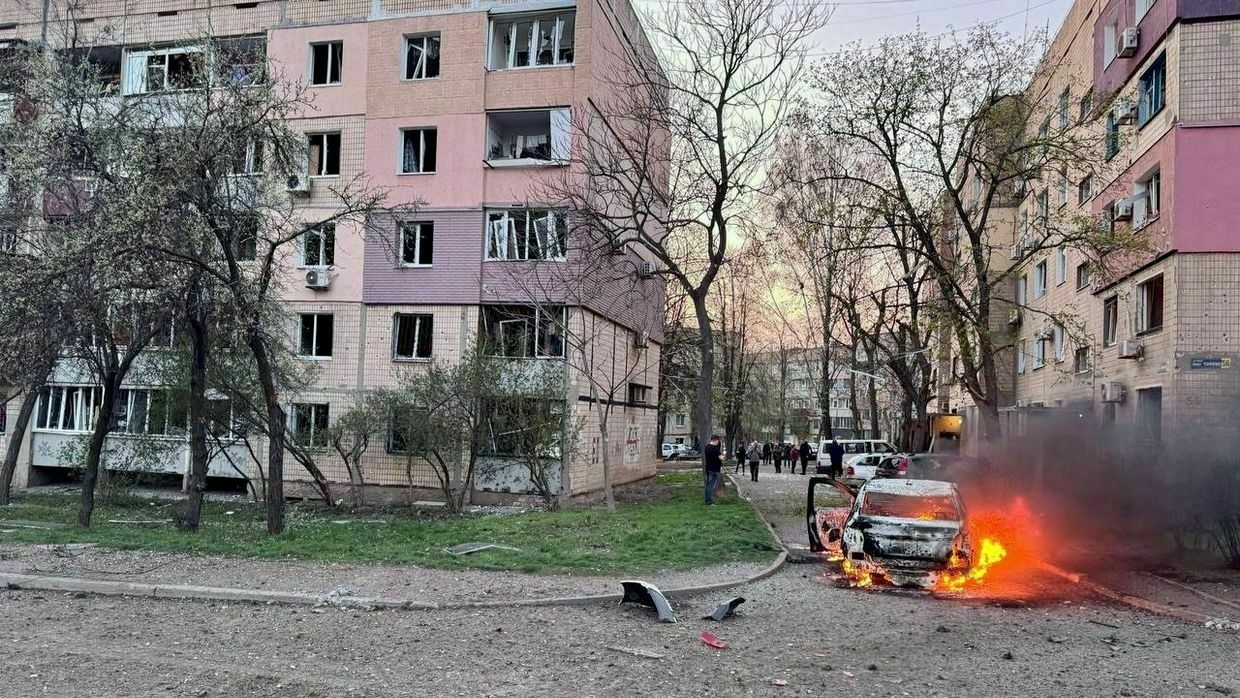
The aftermath of a Russian attack against Kryvyi Rih in Dnipropetrovsk Oblast, Ukraine, on April 4, 2025. (President Volodymyr Zelensky / Telegram) 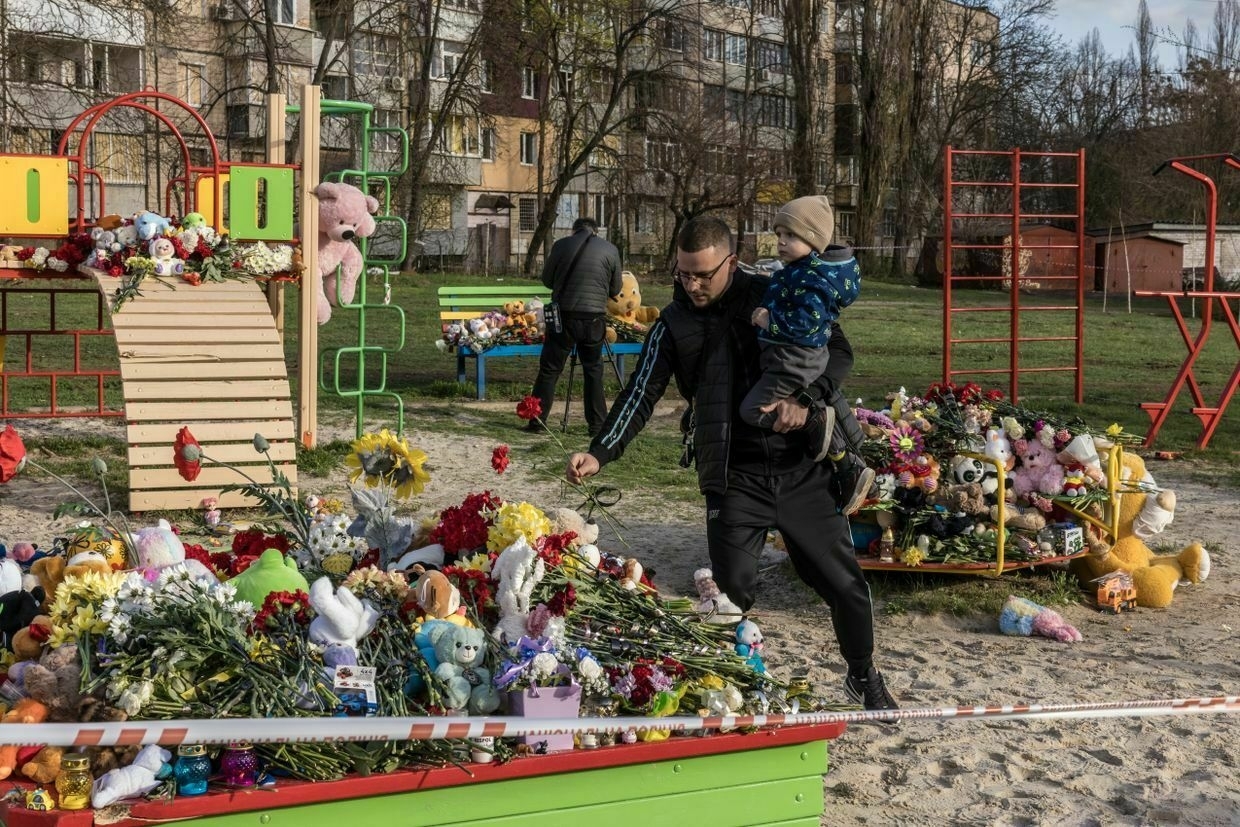
A man with a boy lays flowers at a playground to commemorate victims of a Russian missile strike in Kryvyi Rih, Ukraine, on April 5, 2025. (Oksana Parafeniuk / For The Washington Post via Getty Images) Jenny MathersRussian political expert and lecturer at the U.K.’s Aberystwyth UniversityYou asked what might be a red line for Trump as far as Putin’s behavior is concerned.
I don’t think you will find that red line — if it exists at all — in continuing brutality against Ukraine, including violating the ceasefire terms, attacking civilian targets, and killing children.
These things just don’t register with Trump as Putin’s crimes since he seems to blame Ukraine for not giving in to Putin and giving him what he wants.
It would be a different story, though, if Putin does something that makes Trump look foolish, publicly humiliates Trump in some way, or perhaps makes the U.S. look foolish.
Otherwise, Trump is likely to accept any kind of behavior from Putin without retaliation.
Did you notice how quickly Trump walked back his comment about being annoyed with Putin for not being ready for a peace deal?
Trump realizes that he is being played and that Putin is just using delaying tactics to get what he wants, but Trump evidently regards that with some admiration, as one card sharp might admire the skill of another.
BREAKING: Ukraine captured 2 Chinese nationals fighting for Russia, Zelensky says“We have information that there are much more than two such Chinese citizens in the occupier’s units,” President Volodymyr Zelensky said.The Kyiv IndependentTim Zadorozhnyy
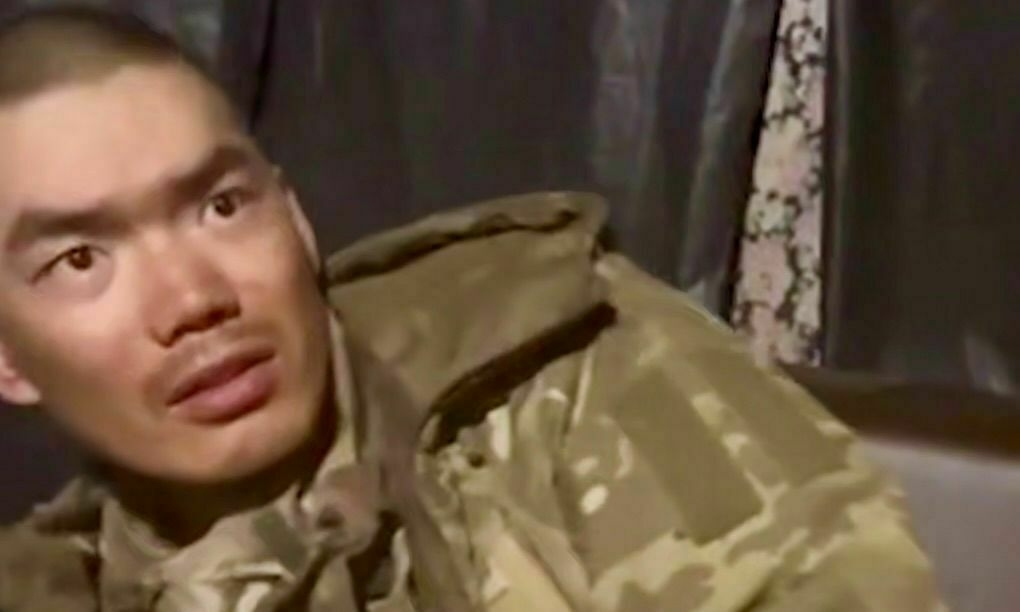
-
NEWSFLASH: Chinese soldiers fighting for Russia captured by Ukraine
Editor’s Note: Read this – and all of our – breaking news alerts by upgrading to a paid subscription!
The Ukrainian military has captured two Chinese citizens who were fighting in the Russian army. This happened in the Donetsk region, announced President Volodymyr Zelenskyy.
Video of captured Chinese soldier, from Zelenskyy’s Telegram channel:
This news comes over a period of incredible tension between China and the United States over tariffs. The global trade war complicates all of America’s international relationships.
And while the U.S. has been alienating both friend and foe due to the Trump tariffs, China has been signaling that it is willing to replace America’s leadership in some key areas.
China even teamed up with historical adversaries like Japan and South Korea to respond to the latest American trade moves.
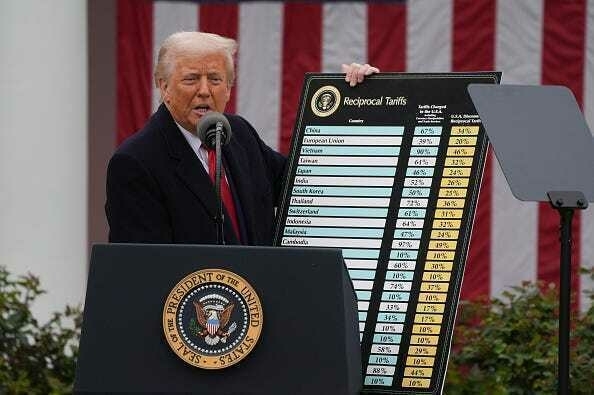
President Donald Trump holds a chart as he announced a plan for tariffs on imported goods during an event in the Rose Garden at the White House. (Photo by Demetrius Freeman/The Washington Post via Getty Images) China has also offered to play a role in brokering a peace between Ukraine and Russia, suggesting that it could contribute peacekeepers to maintain any negotiated outcome.
However, the capture of two Chinese soldiers undercuts the communist nation’s ability to claim some sort of neutral status.
After the paywall, you will learn about:
—The story of a third Chinese man who fought against Ukraine
—Who has custody of the Chinese POWs
—What the response from the Zelenskyy administration has been so far in Kyiv
-
Trump About Russians Bombing Ukraine. Largest NATO Air Training. Norway's Shells Aid to Ukraine
-
US to relocate troops, equipment from key Ukraine aid hub in Poland
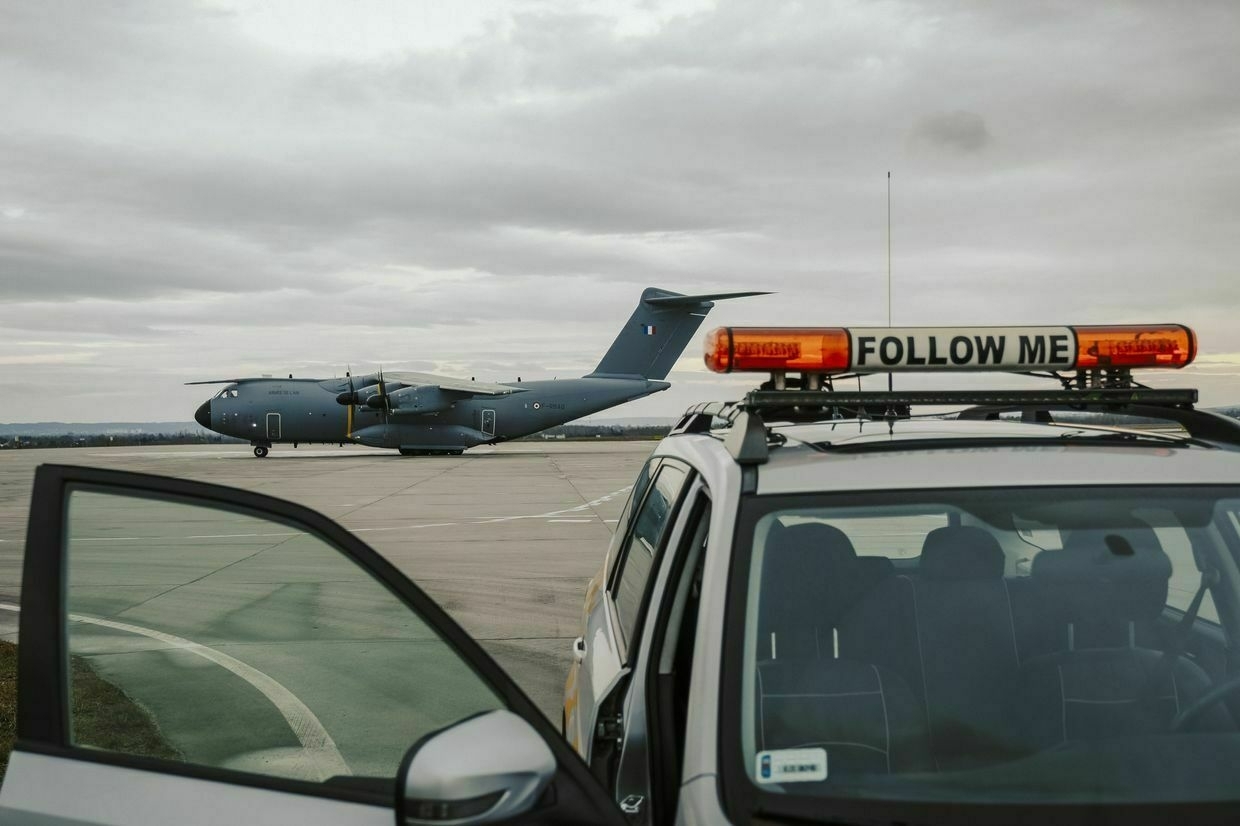
The U.S. Army Europe and Africa Command announced on April 8 that American personnel and equipment will be relocated from Poland’s Jasionka Airport, a key logistics hub for delivering military aid to Ukraine.
“The important work of facilitating military aid to Ukraine via Jasionka will continue under Polish and NATO leadership, supported by a streamlined U.S. military footprint,” the command said in a statement.
The redeployment, which will move assets to other locations in Poland, follows months of planning and is part of a broader strategy to optimize U.S. military operations across the region.
“Poland is a great host,” said Gen. Christopher Donahue, commanding general of U.S. Army Europe and Africa. “After three years at Jasionka this is an opportunity to right-size our footprint and save American taxpayers tens of millions of dollars per year."
Polish President Andrzej Duda responded to the announcement by assuring that the move does not signify a U.S. troop withdrawal.
“I don’t know if this is being implemented at this point. The very issue of taking responsibility for the security issues of the Rzeszow airport, its security, I know,” Duda said during a press conference in Tallinn.
The U.S. military has operated in Jasionka, near Rzeszow, since early 2022. The airport quickly became one of the most important logistical points for coordinating Western support to Ukraine, protected by American Patriot air defense systems.
The facility is located less than 62 miles from the Ukrainian border and transports a significant percentage of Western materiel bound for the front lines. It is also a main stopover point for foreign leadership traveling to Kyiv on official visits.
In March 2023, Warsaw detained at least 16 members of a Russian spy ring tasked with gathering information on the number of transports to Ukraine in the region surrounding the airport, the level of security measures in place, and the type of equipment.
The redeployment comes amid growing concerns in Europe over a potential drawdown of U.S. forces. NBC News reported on April 8 that senior Defense Department officials are weighing a plan to withdraw up to 10,000 U.S. troops from Eastern Europe.
U.S. President Donald Trump’s “America First” doctrine and recent statements from U.S. officials have raised alarm among NATO allies about Washington’s long-term commitment to European defense.
Trump ‘not happy’ with Russian bombing of Ukraine, says he ‘doesn’t know what’s happening there’Trump has expressed frustration with Russia’s deadly missile attacks on Ukraine but has yet to take any concrete action against the Kremlin.The Kyiv IndependentTim Zadorozhnyy
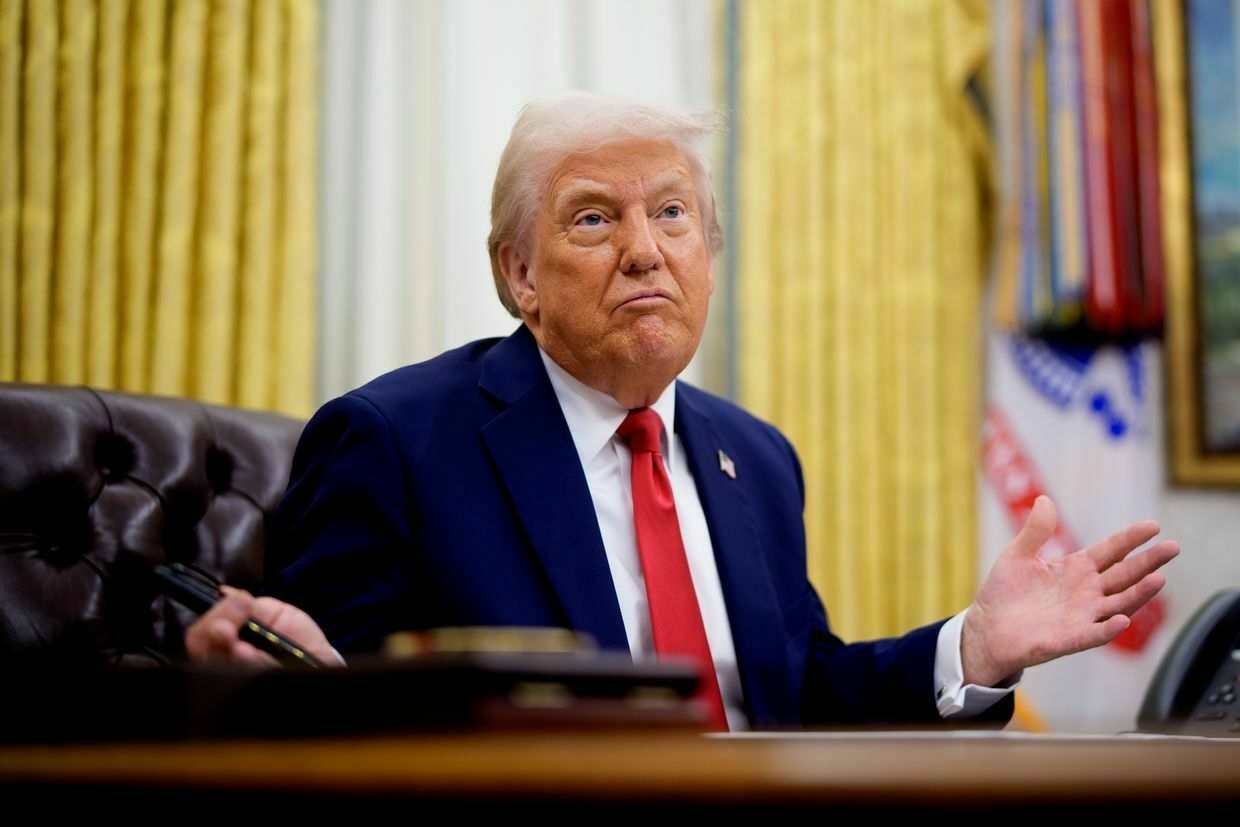
-
BREAKING: Ukraine captured 2 Chinese nationals fighting for Russia, Zelensky says
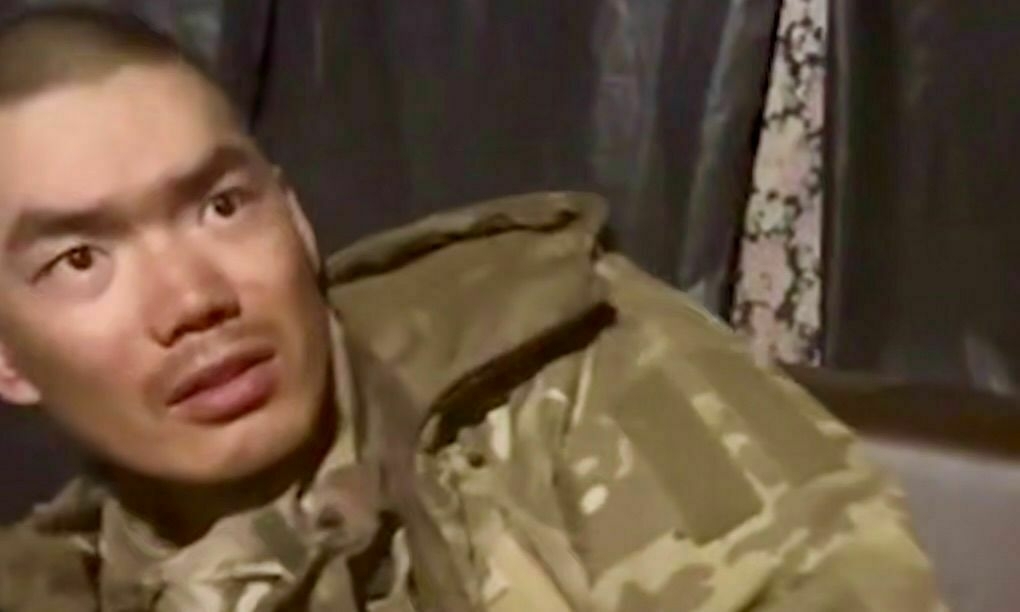
Editor’s note: This is a developing story and is being updated.
Ukrainian troops have captured two Chinese nationals who were fighting in the ranks of the Russian military against Ukraine, President Volodymyr Zelensky said on April 8.
“We have information that there are much more than two such Chinese citizens in the occupier’s units,” Zelensky said. “We have the documents of these prisoners, bank cards, personal data."
Zelensky instructed Ukraine’s Foreign Minister Andrii Sybiha to contact Beijing immediately to determine how China would respond.
The president said Russia’s recruitment of Chinese nationals — whether direct or indirect — is further evidence that Vladimir Putin is seeking to prolong the war, not end it.
“We definitely need a reaction to this. A reaction from the United States, Europe and everyone in the world who wants peace,” he added.
According to Zelensky, the captured Chinese citizens are being held by Ukraine’s Security Service.
0:00/A video released by President Volodymyr Zelensky of one of the alleged Chinese soldiers (Telegram/President Zelensky) Trump ‘not happy’ with Russian bombing of Ukraine, says he ‘doesn’t know what’s happening there’Trump has expressed frustration with Russia’s deadly missile attacks on Ukraine but has yet to take any concrete action against the Kremlin.The Kyiv IndependentTim Zadorozhnyy
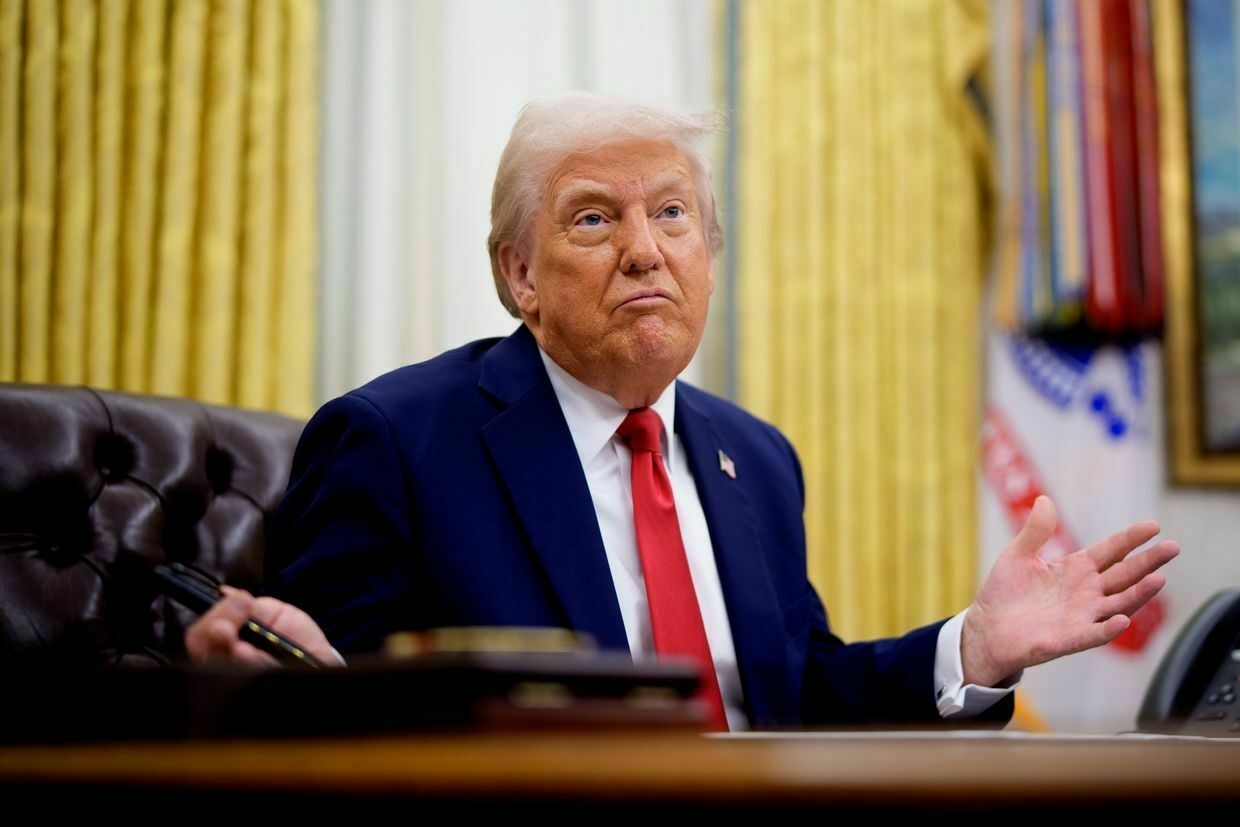
-
US considering withdrawing 10,000 troops from Eastern Europe, NBC News reports
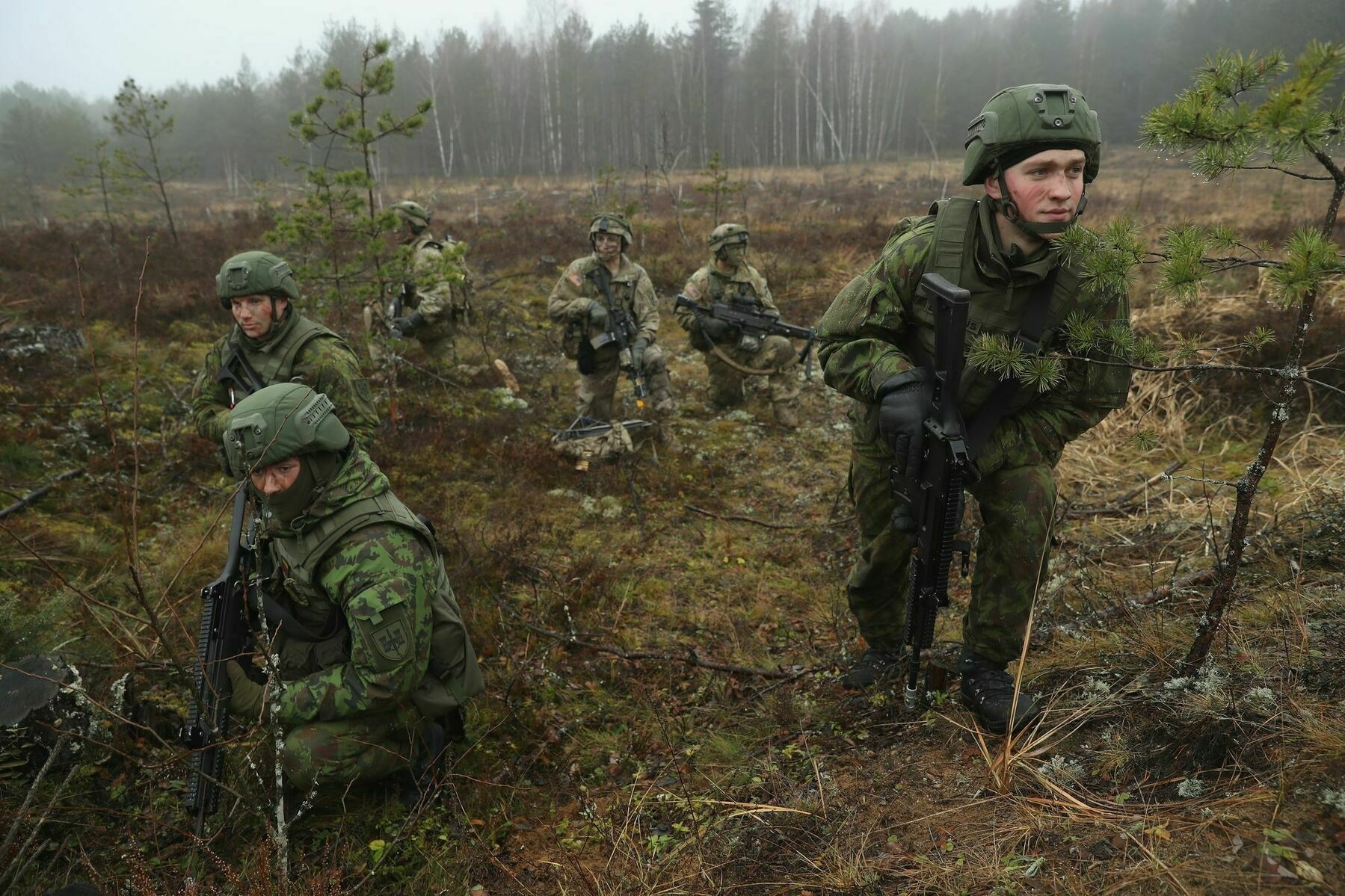
Senior U.S. Defense Department officials are considering withdrawing up to 10,000 troops from Eastern Europe, NBC News reported on April 8, citing six U.S. and European officials briefed on the discussions.
The move would scale back the temporary surge of 20,000 U.S. troops deployed in 2022 to bolster NATO’s eastern flank following Russia’s full-scale invasion of Ukraine.
U.S. forces are currently stationed across Poland, Romania, and the Baltic states to deter further Russian aggression and reassure allies bordering in the region.
The potential drawdown comes amid renewed pressure from U.S. President Donald Trump and Defense Secretary Pete Hegseth for NATO allies to increase their defense spending and assume more responsibility for Europe’s security.
According to NBC, the numbers remain under discussion, but the current proposal would remove as many as half of the additional troops sent after February 2022.
NATO Secretary-General Mark Rutte said earlier that any reduction would be done in close coordination with European allies.
During U.S.-Russia talks in Saudi Arabia, Moscow allegedly demanded a full NATO withdrawal from Eastern Europe as a condition for normalizing relations, the Financial Times reported.
Russia has long accused NATO of threatening its security, citing the alliance’s expansion and Ukraine’s potential membership as pretexts for its war. President Vladimir Putin has claimed that NATO’s presence near Russian borders justifies continued military action.
The debate over U.S. military commitments in Europe comes as NATO faces pressure to raise defense spending targets. Trump has called for increasing the benchmark from 2% to 5% of GDP, far above what most allies currently spend.
Finland’s Defense Minister Antti Hakkanen told the Financial Times that European nations must establish a clear plan, in coordination with Washington, to gradually take over more of the continent’s defense burden.
However, concerns persist that U.S. support may decline faster than Europe can ramp up its own capabilities.
U.S. Secretary of State Marco Rubio said Trump still supports NATO but expects allies to deliver “a realistic pathway” to reduce reliance on American taxpayers.
Zaluzhnyi reveals details of Wiesbaden HQ in Ukraine’s war effort, calls it ‘secret weapon’Zaluzhnyi said the need became critical in the summer of 2022 when Western partners questioned the utility of some weapons Kyiv was requesting.The Kyiv IndependentTim Zadorozhnyy
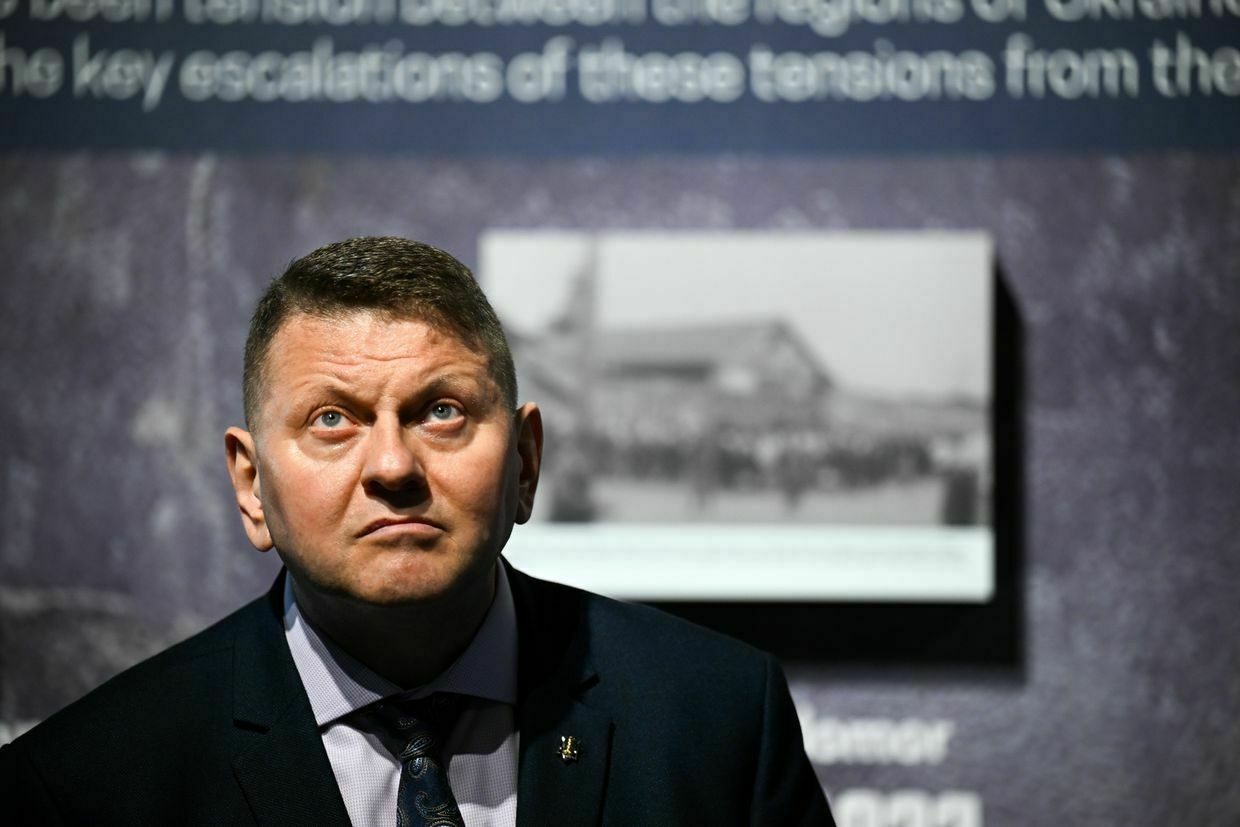
-
'We will not look away' — Belgian PM visits Bucha
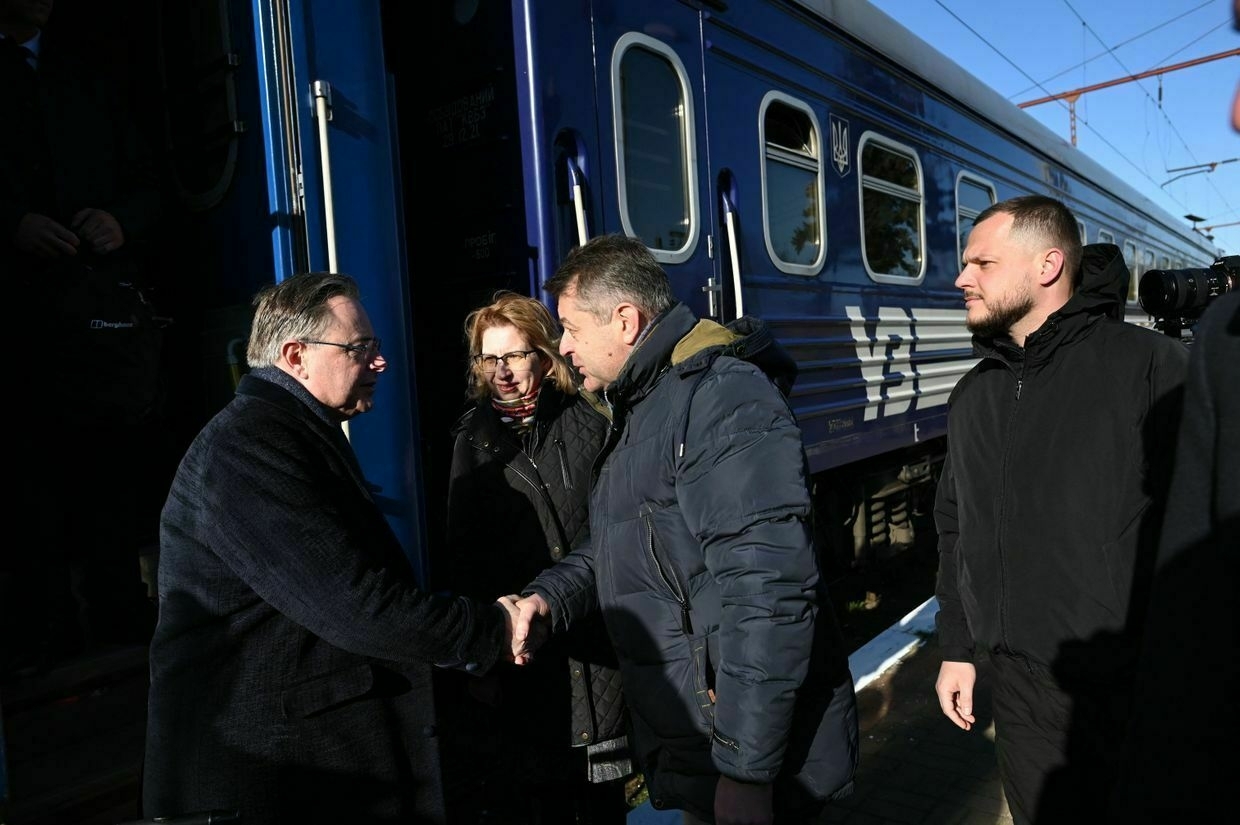
Belgian Prime Minister Bart de Wever, Foreign Minister Maxime Prevot, and Defense Minister Theo Francken, arrived in Kyiv on April 8, meeting with President Volodymyr Zelensky.
The delegation also visited Bucha, a suburb northwest of Kyiv which became a symbol of Russian war crimes after mass graves were uncovered in April 2022 following its liberation by Ukrainian troops.
The Ukrainian Prosecutor General’s Office has documented over 1,400 civilian killings in the Bucha District, including 637 in Bucha itself. Among the victims were 37 children. Many were executed, their bodies left on the streets or buried in mass graves.
Prevot said on his social media that their visit is “more than a symbolic gesture."
“Today, we honor the victims. We stand with the survivors. And we reaffirm this: Belgium stands shoulder to shoulder with Ukraine. Justice must prevail. And we will not look away,” Prevot said in a post on social media.
The Kremlin has long-used Bucha in state propaganda, denying the extensively documented crimes committed by Russian forces.
Ukraine marked the third anniversary of the Bucha tragedy on March 31, with European parliamentary leaders visiting the suburb.
Today, together with the Prime Minister of Belgium, @Bart_DeWever, we commemorated our defenders—the warriors thanks to whom Ukraine is alive, free, and continues to fight.
— Volodymyr Zelenskyy / Володимир Зеленський (@ZelenskyyUa) April 8, 2025
We remember the feat of every man and woman who defended Ukraine at the cost of their own lives. Eternal… pic.twitter.com/oTSUZRnZLt"The brutality of March 2022 is not hearsay," Prevot said. "It is fact. Documented by satellite images, forensic experts, survivors’ testimonies, and the tireless work of the UN, ICC, and NGOs.
"And yet, Russia still tries to deny it, spinning lies, peddling disinformation, calling Bucha a hoax. But no lie can erase the truth written in blood," he added.
"Bucha is not an isolated case. From Mariupol to Izium, from Kramatorsk to Kherson, the pattern is the same: terror, torture, mass killings. These are not tragic mistakes of war. They are war crimes. Systematic. Calculated. Deliberate."
Trump ‘not happy’ with Russian bombing of Ukraine, says he ‘doesn’t know what’s happening there’Trump has expressed frustration with Russia’s deadly missile attacks on Ukraine but has yet to take any concrete action against the Kremlin.The Kyiv IndependentTim Zadorozhnyy
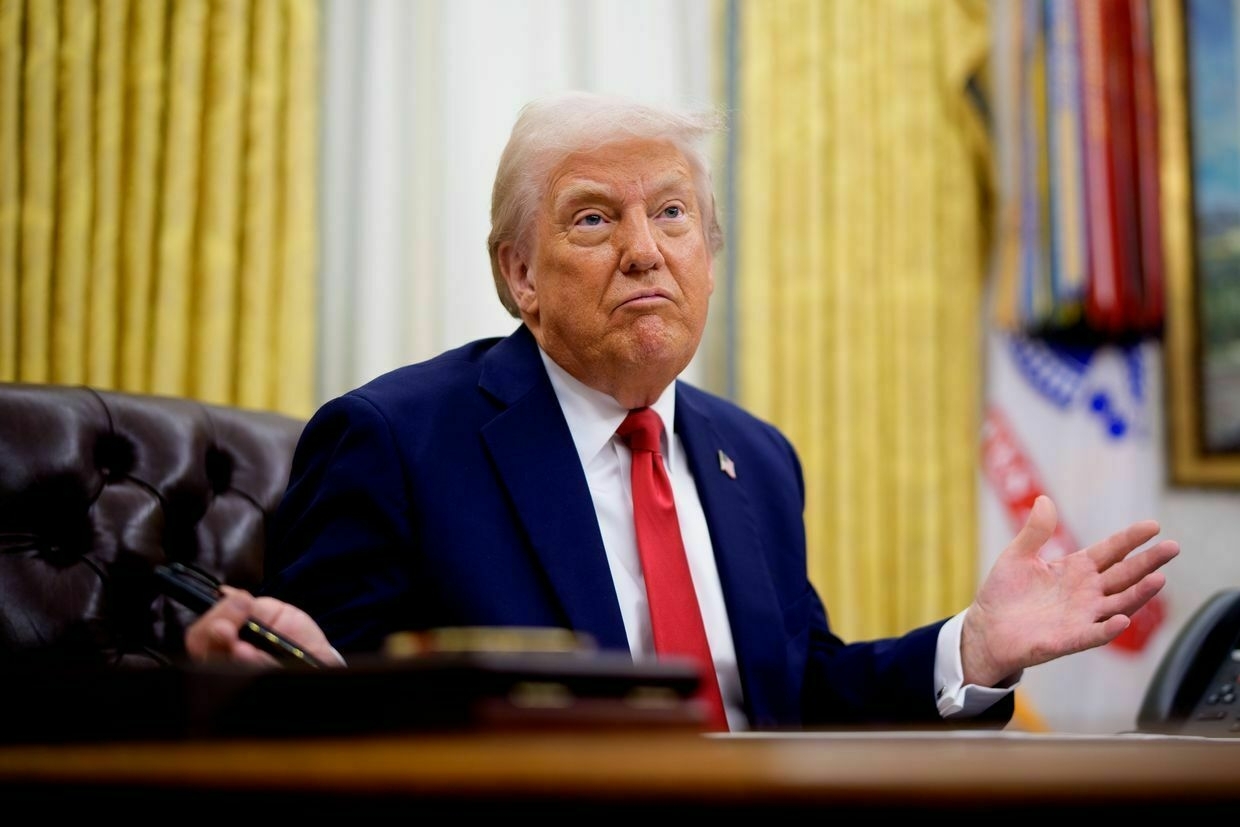
-
Zaluzhnyi reveals details of Wiesbaden HQ in Ukraine's war effort, calls it 'secret weapon'
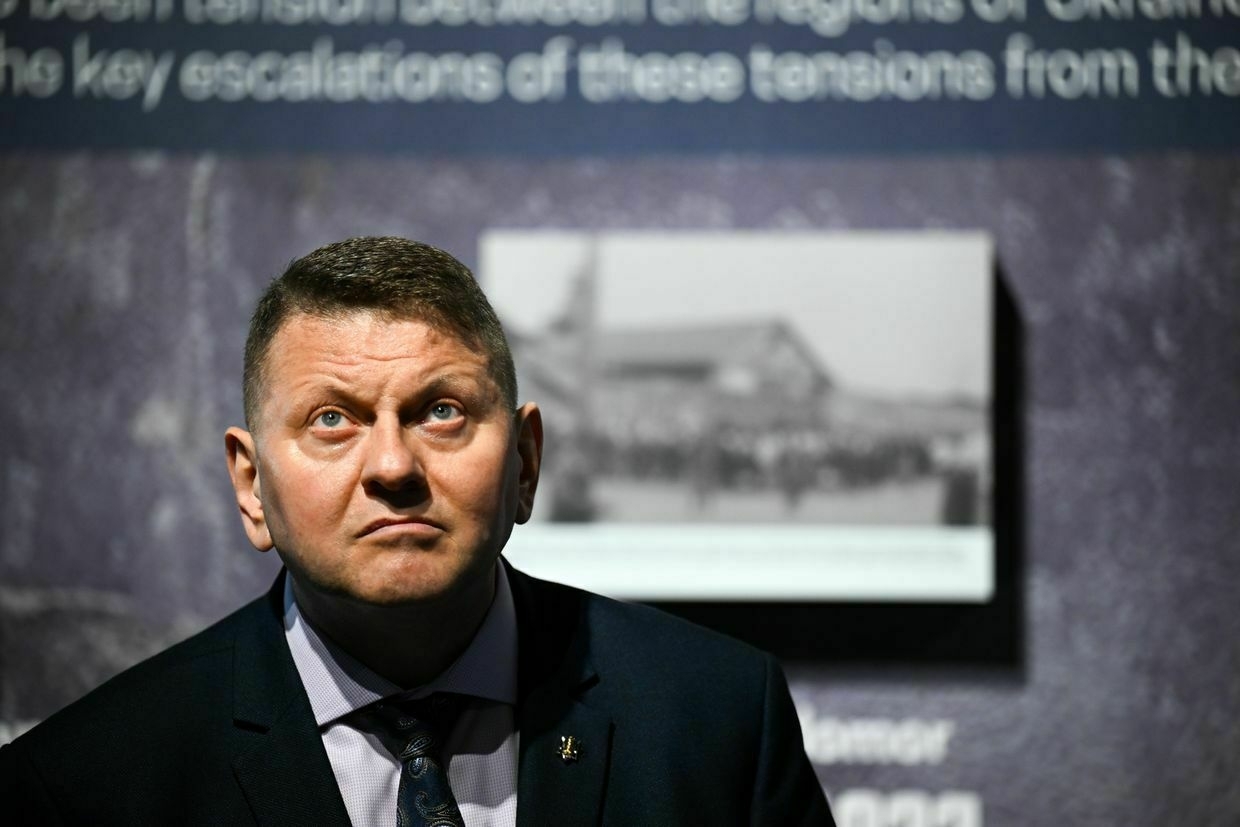
Valerii Zaluzhnyi, former commander-in-chief and current ambassador to the U.K., described the joint Ukrainian-U.S. headquarters in Wiesbaden, Germany, as a “secret weapon” for planning military operations during the war.
“This headquarters has truly become a secret weapon for our partners and me in planning operations and formulating the requirements for their implementation,” Zaluzhnyi said in a post on Facebook on April 8, following a March 29 investigation by the New York Times (NYT) into the facility.
Zaluzhnyi said the coordination center initially took shape in April 2022 at the U.S. European Command in Stuttgart, Germany, before moving to Wiesbaden.
He said the headquarters allowed Ukrainian and NATO planners to assess operational needs in real time and shape logistics accordingly.
“Over time, we realized that we needed a joint operational headquarters with our partners to assess the needs for weapons and equipment based on the planning of operations,” he wrote.
Zaluzhnyi said the need became critical in the summer of 2022 when Western partners questioned the utility of some weapons Kyiv was requesting.
Trump ‘not happy’ with Russian bombing of Ukraine, says he ‘doesn’t know what’s happening there’Trump has expressed frustration with Russia’s deadly missile attacks on Ukraine but has yet to take any concrete action against the Kremlin.The Kyiv IndependentTim Zadorozhnyy
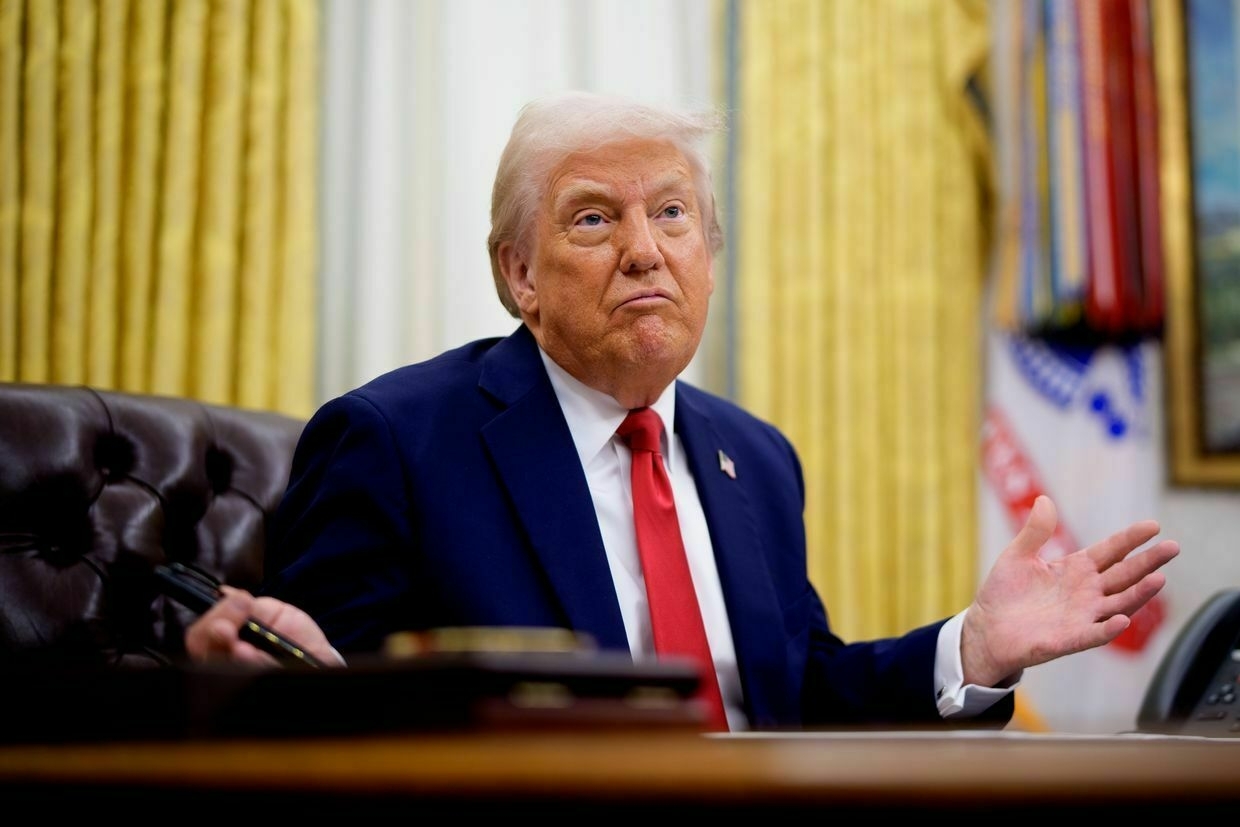
The resulting Wiesbaden headquarters, supported by the U.K., enabled the planning of operations, coordination of logistics, and NATO-standard formulation of requirements.
Zaluzhnyi said it helped conduct war games, forecast battlefield needs, and relay supply demands directly to Washington and European capitals.
The NYT report detailed the existence of “Task Force Dragon,” an American-led initiative based in Wiesbaden that provided Ukrainian forces with real-time intelligence, including coordinates of Russian military positions — even within Russian territory.
The initiative aimed to counterbalance Russia’s advantages in troop numbers and firepower.
Each day, U.S. and Ukrainian officers jointly selected targets, analyzing satellite imagery and intercepted communications and electronic signals to identify Russian deployments, which were then shared with Ukraine’s military.
The NYT article also revealed tensions and confusion within the Biden administration after Ukraine sank the Moskva, Russia’s Black Sea flagship, in April 2022.
According to the report, American and Ukrainian naval officers were on an intelligence sharing call when the former noticed the ship sinking on radar screens.
“Oh my God. Thanks a lot. Bye,” the Ukrainians reportedly replied.
It also reported that Ukraine’s 2023 counteroffensive toward Melitopol was sidelined in favor of the protracted Bakhmut campaign.
Zaluzhnyi was dismissed as commander-in-chief in February 2024 and replaced by Oleksandr Syrskyi. The move followed months of speculation and media reports citing internal disagreements over Ukraine’s war strategy.
The former commander-in-chief assumed the role of Ukrainian Ambassador to the United Kingdom on July 11, 2024.
Kyiv responds to Ukrainian-born US lawmaker’s controversial comments on Zelensky, occupied territoriesIn an interview with the Telegraph published on April 7, Victoria Spartz said Ukraine is not in a position to demand the return of all occupied territories.The Kyiv IndependentTim Zadorozhnyy
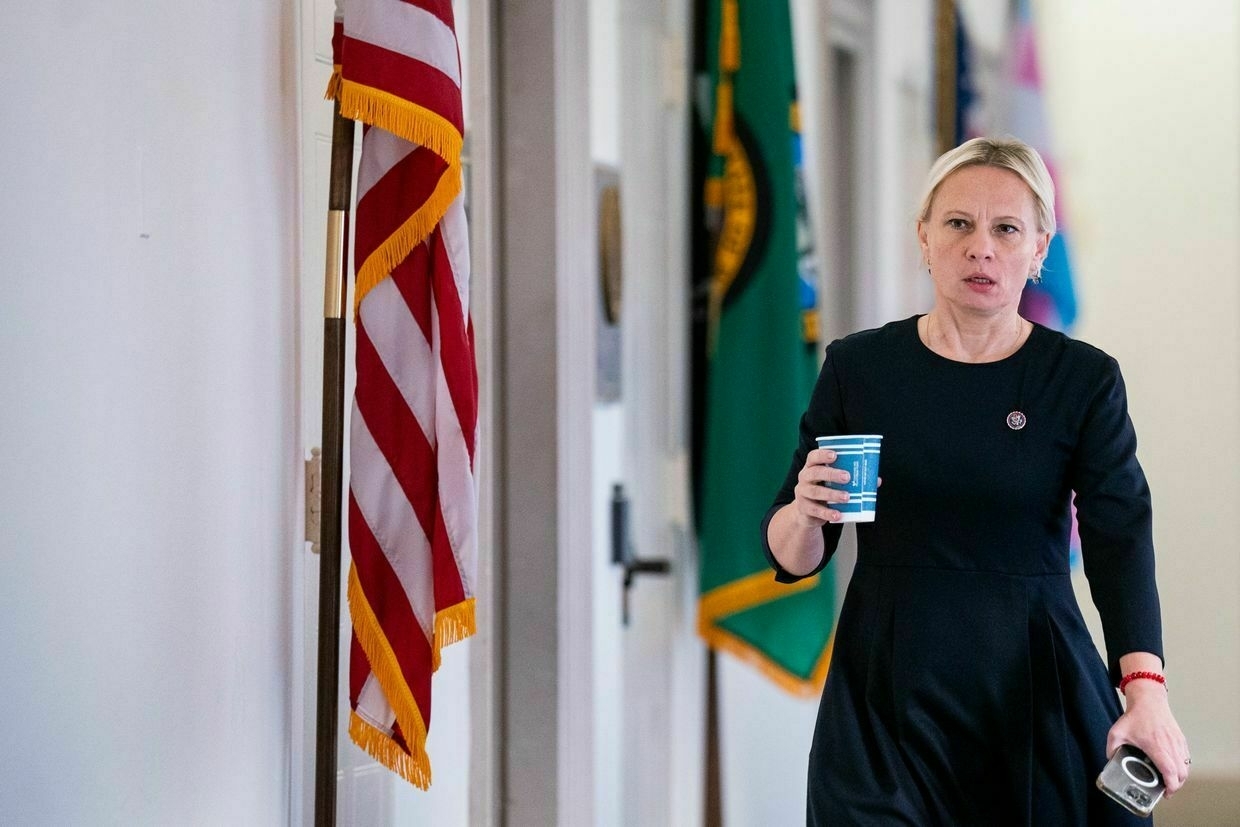
-
Kyiv responds to Ukrainian-born US lawmaker's controversial comments on Zelensky, occupied territories
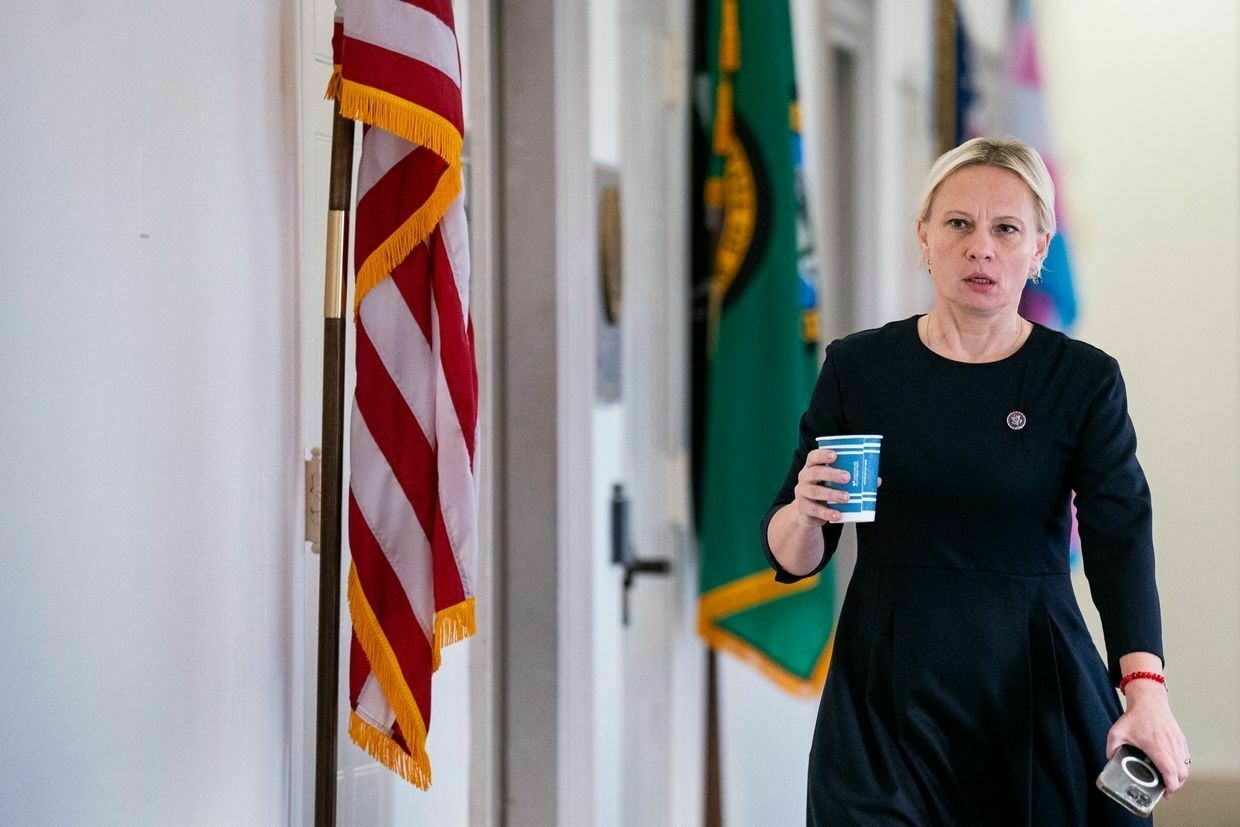
Ukraine’s Foreign Ministry has hit back at remarks from a Ukrainian-born U.S. lawmaker who said Kyiv should cede territory to Russia, and President Volodymyr Zelensky should resign.
In an interview with the Telegraph published on April 7, Victoria Spartz said Ukraine is not in a position to demand the return of all occupied territories.
“If they were winning the war, that would be very different,” she said, adding the people of Ukraine should demand Zelensky’s resignation.
“Unlike Victoria, all of our land has always been and will always remain Ukrainian,” Ukraine’s Foreign Ministry spokesperson Heorhii Tykhyi responded on X.
Verkhovna Rada Speaker Ruslan Stefanchuk also weighed in, accusing Spartz of echoing Kremlin narratives.
“One, born in Kyiv, became a representative of Putin. Another, from Chernihiv Oblast, discusses the ‘expediency’ of giving up Ukrainian territories, calling the Ukrainian people a faceless ‘they,'” Stefanchuk said.
The remark referencing Kyiv-born Kirill Dmitriev comes after Russian President Vladimir Putin appointed him special envoy for economic affairs, tasked with advancing proposals for a U.S.-Russia peace deal.
Spartz, who was born in Chernihiv Oblast and emigrated to the U.S. in 2000, has frequently spoken about the war in Ukraine in personal terms.
Elected to Congress in 2021 and again in 2024, she initially backed U.S. aid for Ukraine but has since become a vocal critic of both the Biden administration and President Volodymyr Zelensky’s government.
Spartz, aligning herself with U.S. President Donald Trump’s push for negotiations with Russia, accused Zelensky of disrespecting Trump during their March Oval Office clash.
She claimed the Ukrainian president “insulted the American president” and “did a disservice to the Ukrainian people,” suggesting Ukrainians should vote him out of office.
“If they elect him, they’re going to lose the rest of the country,” Spartz told the Telegraph.
In recent months, Spartz has publicly distanced herself from Ukraine policy, citing “a lack of clear strategy” and expressing skepticism over continued military assistance.
She opposed the proposed $60 billion Ukraine aid package in 2024 and endorsed GOP calls for converting military assistance into loans.
Spartz has also faced scrutiny in Washington. Politico reported in June 2024 that she was under preliminary investigation by the House Ethics Committee for allegedly mistreating staff and fostering a hostile work environment.
In a March 24 interview with Newsmax, Spartz said Trump was “a good negotiator” and criticized Zelensky as a leader who “took control of all Ukrainian media, prosecuted churches, businesses and volunteers."
Her remarks echoed disinformation frequently promoted by Russian officials to undermine Ukraine’s democratic institutions.
Trump ‘not happy’ with Russian bombing of Ukraine, says he ‘doesn’t know what’s happening there’Trump has expressed frustration with Russia’s deadly missile attacks on Ukraine but has yet to take any concrete action against the Kremlin.The Kyiv IndependentTim Zadorozhnyy
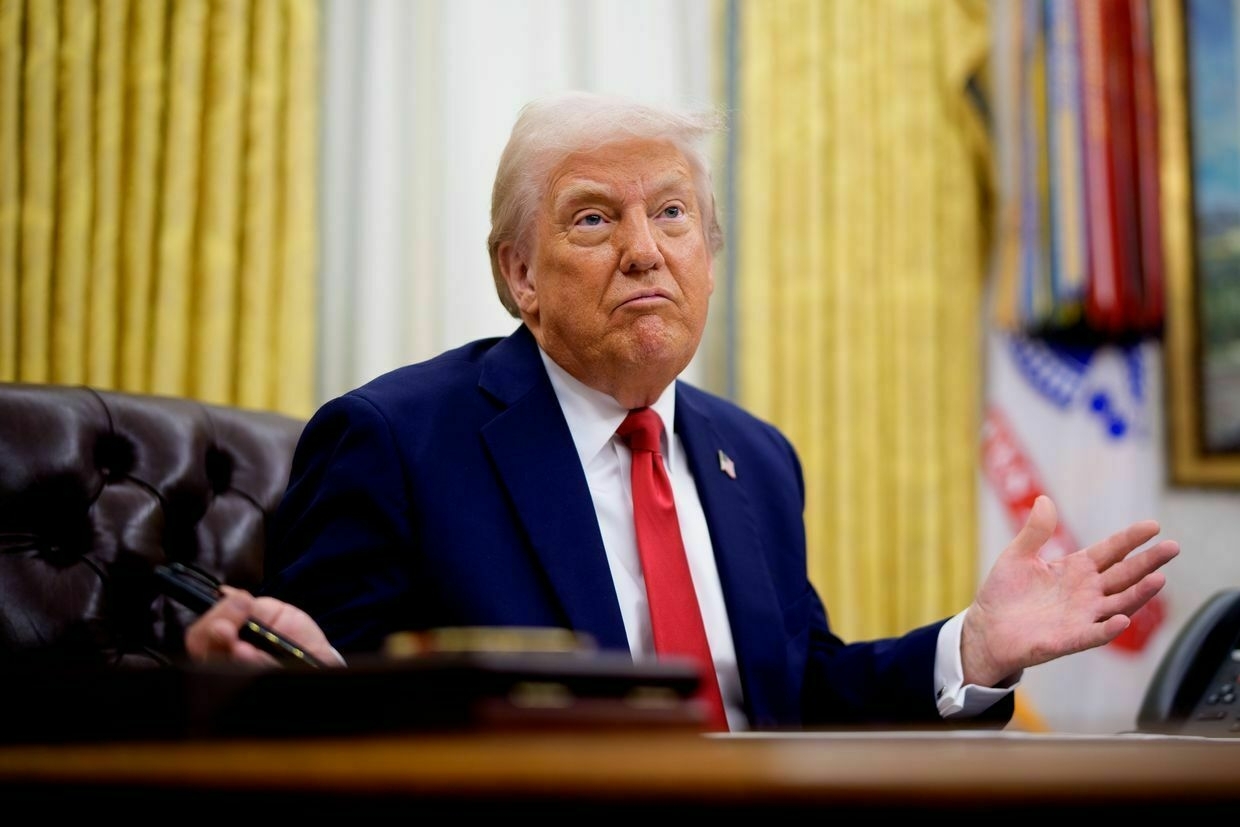
-
Trump 'not happy' with Russian bombing of Ukraine, says he 'doesn't know what's happening there'
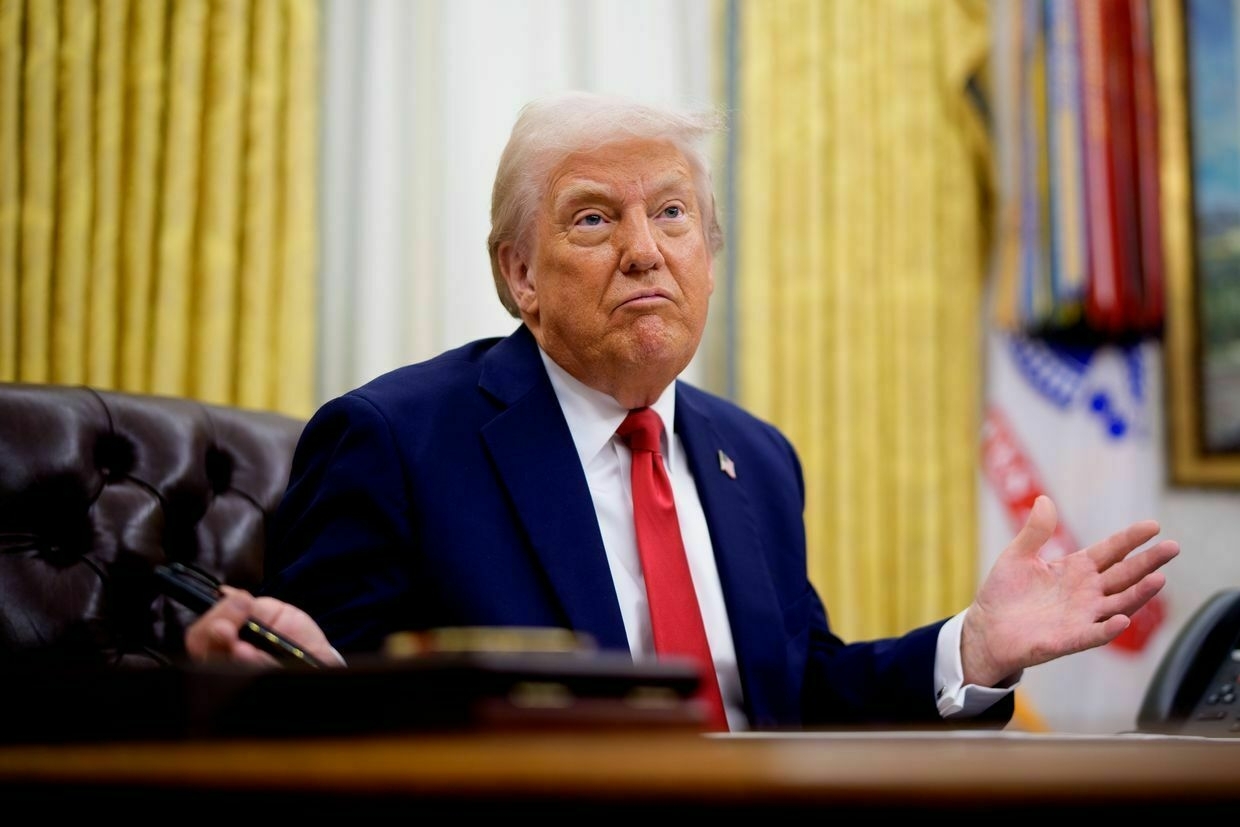
U.S. President Donald Trump said he was “not happy” with Russia’s intensified attacks on Ukraine, while speaking during an Oval Office meeting with Israeli Prime Minister Benjamin Netanyahu on April 7.
“I’m not happy about what’s going on with the bombing because they’re bombing like crazy right now. They’re bombing — I don’t know what’s happening there,” Trump said.
His remarks came a day after similar comments on April 6, when he said, “I don’t like the bombing."
The recent escalation includes a deadly missile strike on Kryvyi Rih, President Volodymyr Zelensky’s hometown, on April 4. The attack killed 20 people, including 9 children. On April 6, a Russian ballistic missile strike on Kyiv killed one and injured three others.
Ukraine on March 11 agreed to a full 30-day ceasefire, but Russia rejected the deal unless it curtailed foreign military aid and imposed restrictions on Ukraine’s armed forces.
Trump’s renewed criticism follows limited progress in U.S.-mediated talks held in Jeddah on March 11. The sides settled on a partial ceasefire focused on energy infrastructure and the Black Sea.
Just two days after the agreement, Ukraine accused Russia of violating the deal by striking power facilities in Kherson. Moscow denied the attack but warned it “reserves the right” to exit the agreement if Ukraine fails to comply.
The Kremlin also accused Ukraine of striking the Sudzha gas metering station in Kursk Oblast, a claim Kyiv dismissed as an attempt to justify further attacks.
Despite his role as mediator, Trump has not taken punitive measures in response to Russia’s renewed aggression. He reiterated on April 7 that Moscow had avoided U.S. tariffs only because “we’re not doing business, essentially, with Russia, because they’re at war."
Trump’s new tariff regime, announced under the “Liberation Day” policy, slapped duties on most major U.S. trading partners — including a 10% tariff on Ukraine.
The European Union was hit with 20%, and China with 54%. However, Russia, Belarus, North Korea, and Cuba were not included.
NBC News reported on March 30 that Trump is “pissed off” at Russian President Vladimir Putin’s personal animosity toward Zelensky, while the Telegraph wrote on March 23 that he is increasingly angry over Russia’s refusal to de-escalate the war.
Although Trump has repeatedly voiced disapproval over the violence, he has yet to introduce sanctions or direct measures to pressure the Kremlin, which continues its offensive operations across Ukraine.
Trump announces Iran nuclear talks, Russia ready to mediateSpeaking at a meeting with Israeli Prime Minister Benjamin Netanyahu, U.S. President Donald Trump announced that a “very big meeting” was planned for April 12 with Iranian officials.The Kyiv IndependentLucy Pakhnyuk
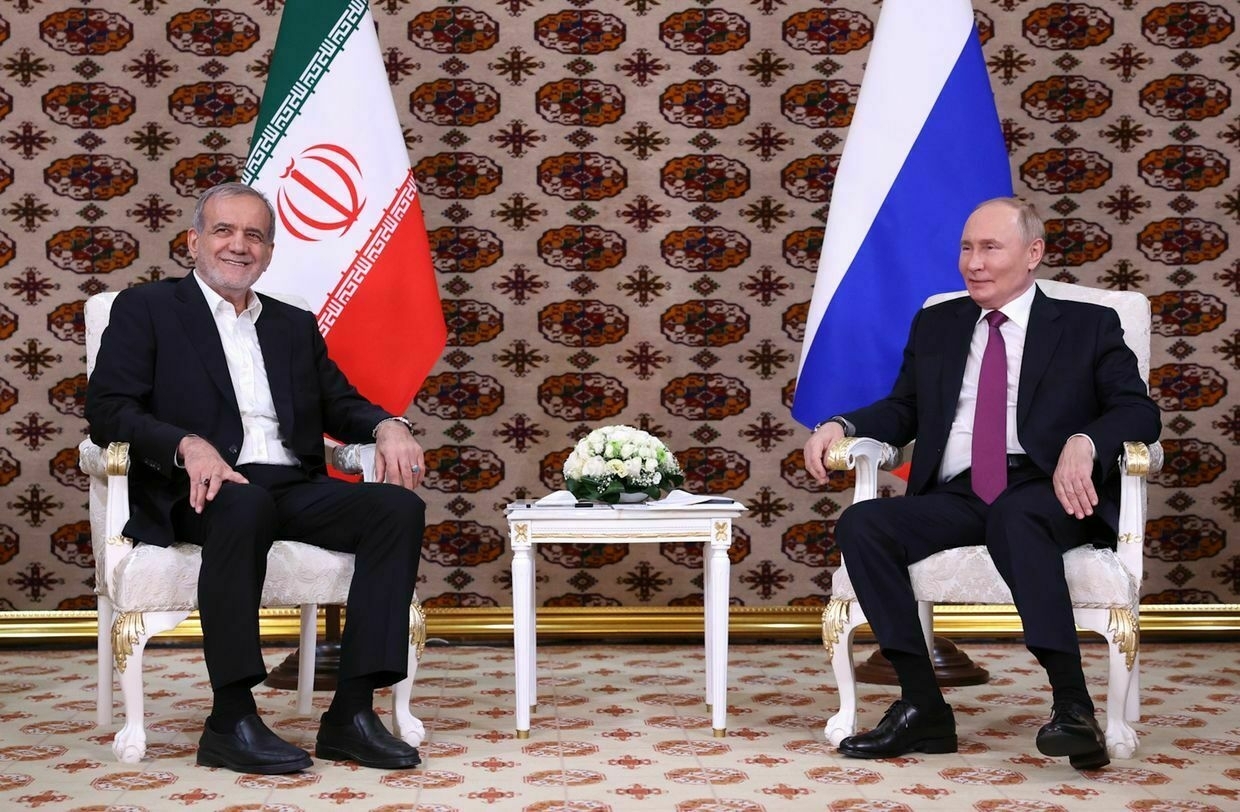
-
Trump announces Iran nuclear talks, Russia ready to mediate
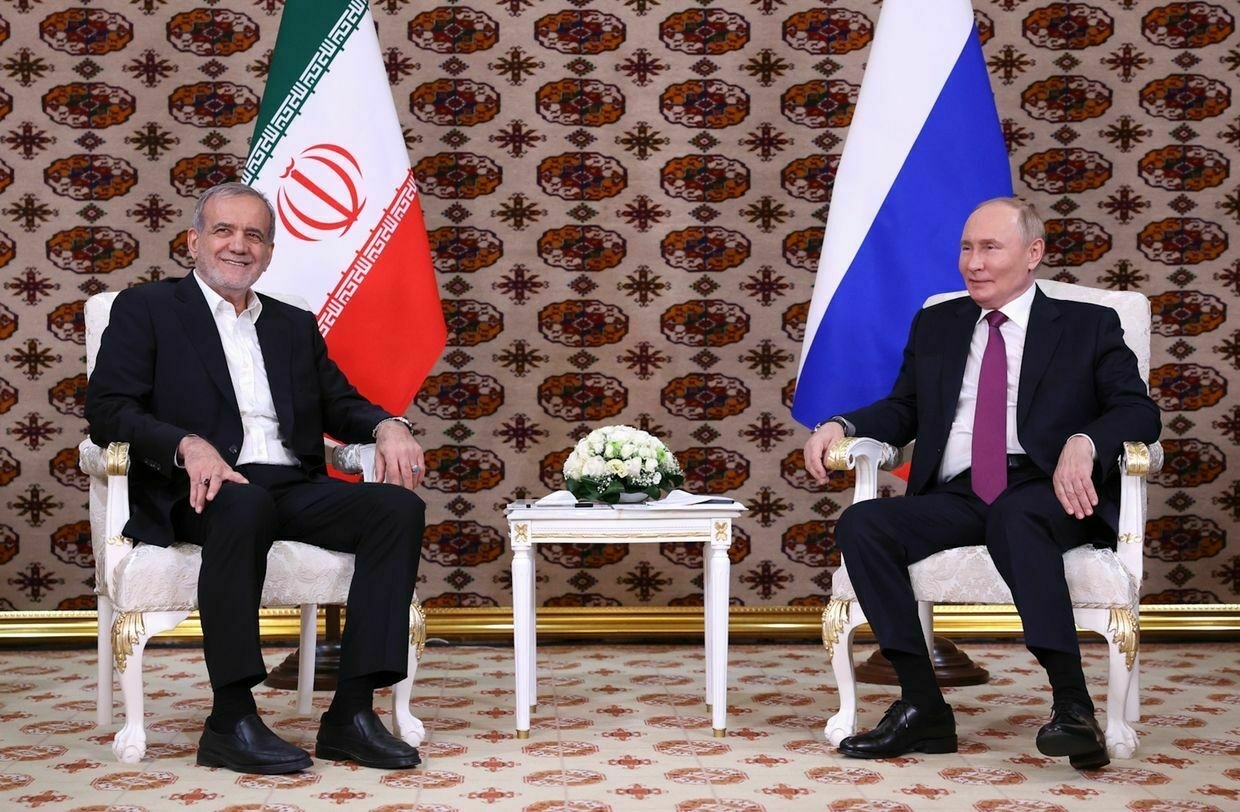
U.S. President Donald Trump said on April 7 that direct talks between the United States and Iran are underway to discuss Iran’s nuclear program.
Speaking at a meeting with Israeli Prime Minister Benjamin Netanyahu, Trump announced that a “very big meeting” was planned for April 12 with Iranian officials.
Trump called the talks “very high level” and said that the U.S. is “dealing with the Iranians directly.”
Meanwhile, Iran has rejected U.S. demands to negotiate directly, Reuters reported on April 6, citing an Iranian official familiar with the matter.
The meeting will take place in Oman, where U.S. and Iranian officials will discuss a potential nuclear deal. Although the U.S. has yet to confirm its delegation, Steve Witkoff, U.S. President Donald Trump’s special envoy to the Middle East, is a likely candidate.
Relatedly, Russia has expressed interest in mediating the relationship between the U.S. and Iran.
“Russia is ready to make every effort, to do everything possible to contribute to this problem’s resolution by political and diplomatic means,” Kremlin spokesman Dmitry Peskov said on April 7.
Russia and Iran have deepened ties since the start of the full-scale invasion. Notably, Iran has provided Russia with thousands of Shahed drones used in attacks against Ukrainian cities, as well as short-range ballistic missiles.
In January, the two countries signed a strategic partnership agreement, strengthening cooperation in security and defense, as well as energy, finance, transportation, and other areas.
Ukraine war latest: Russia claims capture of Sumy Oblast village, Ukraine deniesKey developments on April 7: * Russia claims capture of Sumy Oblast village, Ukraine calls it “disinformation campaign” * Russian forces push to secure ground west of Oskil River in Kupiansk sector, Ukraine says * Over 77,000 Russian targets hit, destroyed in March using drones, Ukraine’s comman…The Kyiv IndependentThe Kyiv Independent news desk
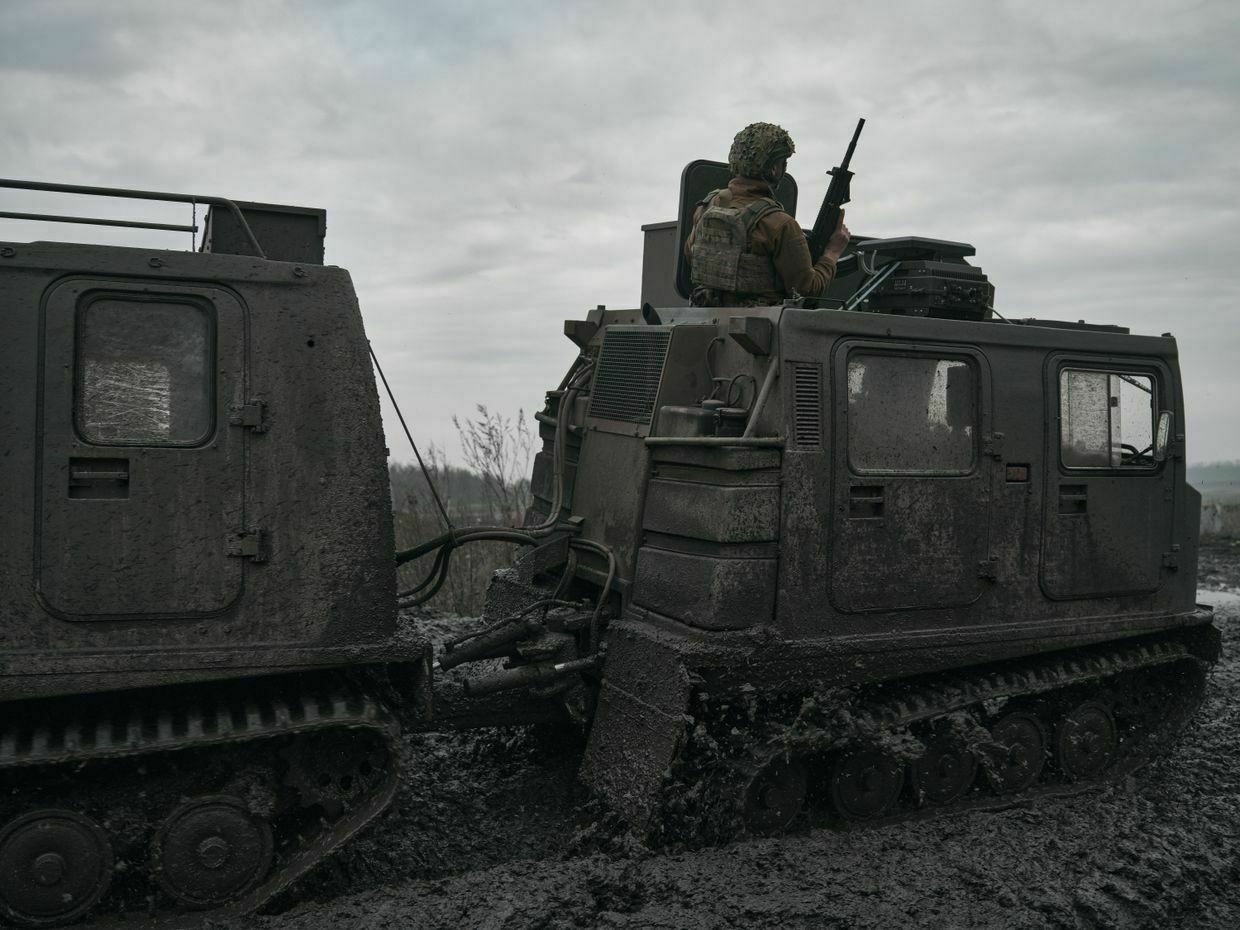
-
US did not impose tariffs on Russia 'because we're not doing business,' Trump says
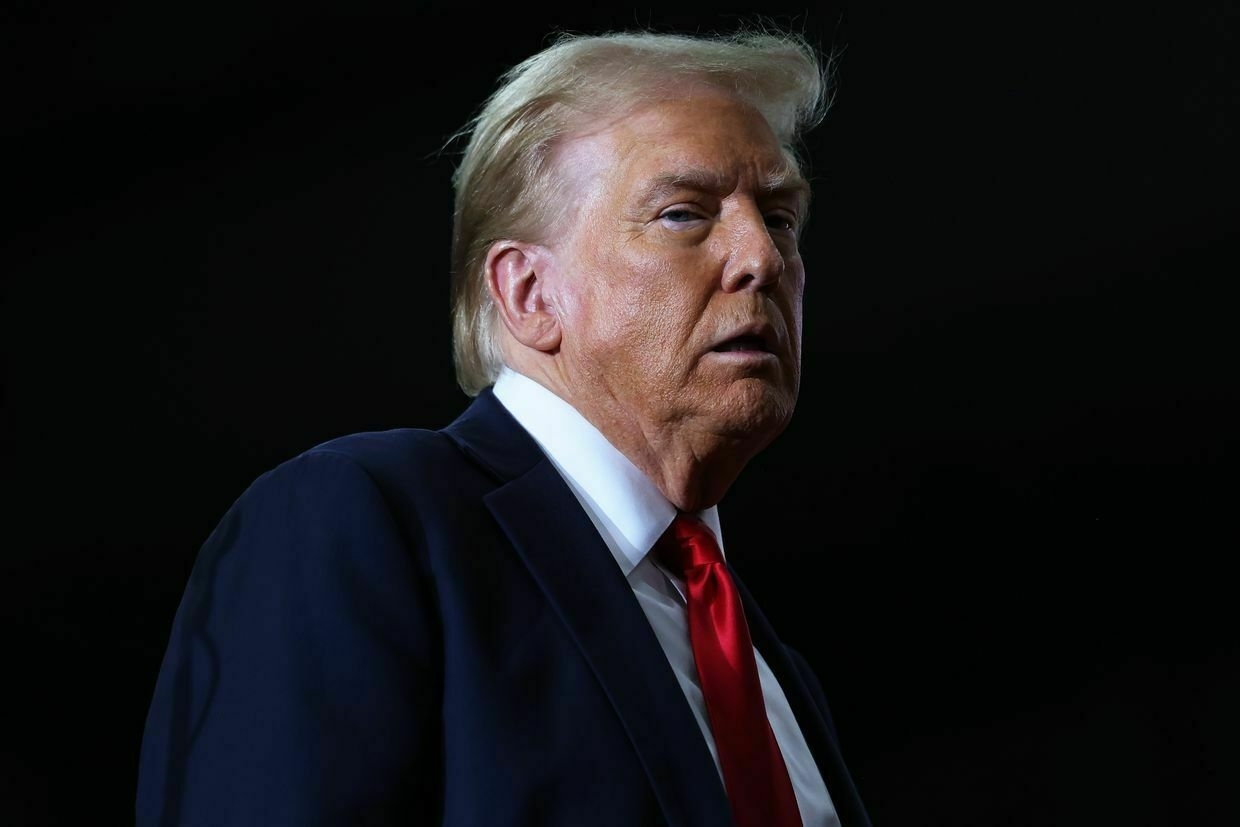
The U.S. did not impose tariffs on Russia, despite imposing tariffs on over 180 different countries and territories, because “we’re not doing business” with Russia, U.S. President Donald Trump said on April 7.
The White House imposed “reciprocal tariffs” on many countries that have a trade surplus with the U.S., set to take effect on April 9. Russia is not among the countries and territories subject to the wide-ranging tariffs.
Trump told reporters, Russia did not have tariffs imposed “because we’re not doing business, essentially, with Russia, because they’re at war."
Trump made his remarks alongside Israeli Prime Minister Benjamin Netanyahu in the White House on April 7.
The U.S. president said he was disappointed in Russia’s ongoing strikes on Ukraine, repeating remarks he made on April 6.
“I’m not happy about what’s going on with the bombing because they’re bombing like crazy right now. They’re bombing — I don’t know what’s happening there. That’s not a good situation,” Trump said.
Russia has intensified missile and drone attacks on Ukraine despite ongoing ceasefire negotiations between Ukraine, the U.S., and Russia.
Trump said an agreement between Russia and Ukraine is “getting sort of close."
Russia targeted Kryvyi Rih in a deadly attack on April 4, killing 20 people and injuring 75.
Moscow has shown signs it is unwilling to move forward on a peace deal with Ukraine. Russian authorities have listed maximalist demands in ceasefire negotiations with Ukraine and the U.S.
Ukraine has already agreed to a U.S.-proposed full 30-day ceasefire, saying on March 11 that Kyiv is ready if Russia also agrees to the terms. So far, Moscow has refused.
As Russia refuses to accept ceasefire, will Trump pressure Moscow?Three weeks ago, Ukraine and the U.S. agreed to implement a full 30-day ceasefire. Russia declined to do so, issuing a list of demands instead. On April 4, Russia hit a residential neighborhood in the city of Kryvyi Rih with ballistic missiles and drones, killing 19 people, including nineThe Kyiv IndependentOleg Sukhov
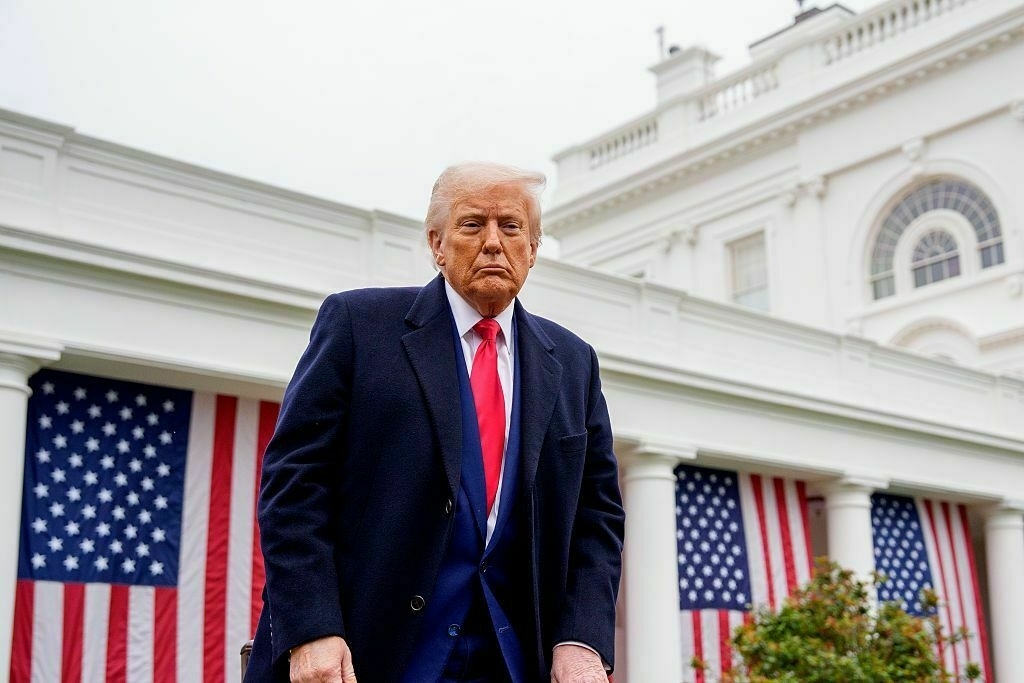
-
Trump's Tariffs Work Outside of Logic – EU Research Fellow
-
Trump and Rubio Take Hardline Stance Against Putin’s Delays!
-
As peace talks stumble, can Ukraine hold the line against Russia's spring offensive?
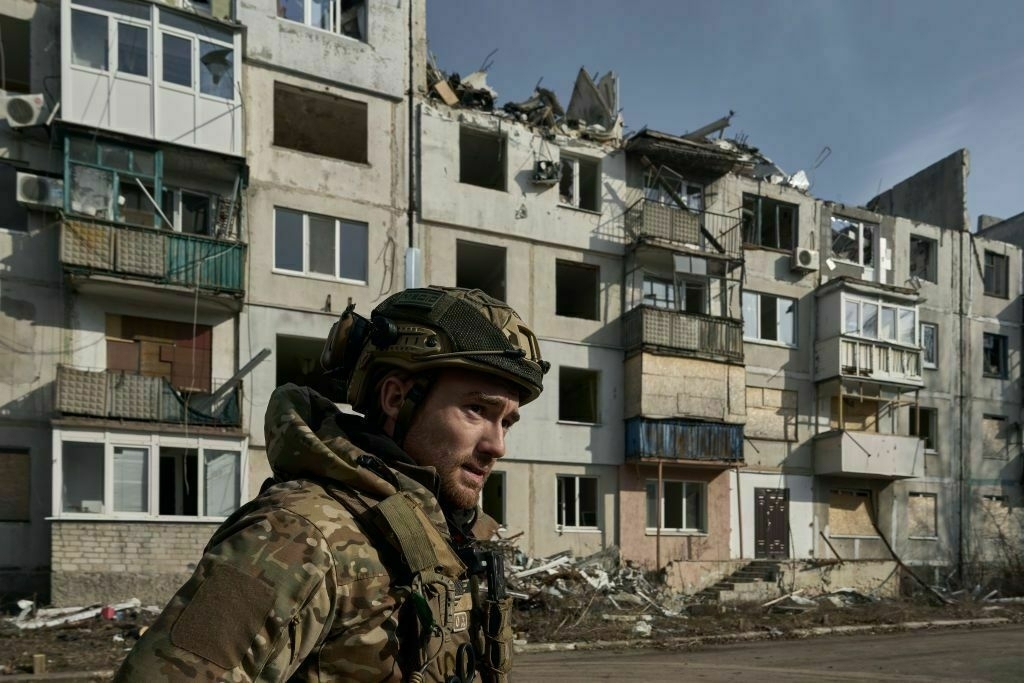
In a way unseen since the start of the full-scale invasion, the daily grind of the front line in Russia’s war against Ukraine has taken the back seat in world headlines.
The dizzying U.S. President Donald Trump-led attempts to negotiate peace in the world arena dominate the news cycle instead.
But as the world reacts to each new mineral deal draft, Saudi-hosted meeting, or aggressive tweet, Russian forces continue to attack Ukrainian lines on a daily basis across the front line.
Over March, Russian forces came close to completely pushing Ukrainian troops out of the salient in Kursk Oblast that Kyiv had occupied since August 2024.
Fighting has since continued along the border areas, but despite a costly and, at times, chaotic retreat from the salient, Ukrainian units in the area have taken up an active defense and prevented a major breakthrough into Ukraine’s Sumy Oblast located just across the border.
Meanwhile, Ukrainian forces have successfully brought Russian advances inside Ukrainian territory to a crawl, with monitoring group DeepState recording that Russian gains for March 2025 were at their lowest since last June.
With peace talks entering a make-or-break phase, the stage is set for a pivotal new clash of armies across the front line.
On March 27, President Volodymyr Zelensky said that Russia was preparing new, large-scale offensives across Ukraine’s northern border in Sumy and Kharkiv oblasts.
Meanwhile, in southern Donetsk Oblast, which has been the main hotspot of the front line since the fall of Avdiivka in February last year, the military reports a new uptick in Russian attacks.
Inside Ukraine’s desperate race to train more soldiersNew recruit Vitalii Yalovyi knew one thing after completing the Ukrainian military’s boot camp: He was not prepared for war. The 37-year-old felt physically unfit, forcing him to miss some courses during the month-long training. His leg was still hurting from long daily walks at a training center i…The Kyiv IndependentAsami Terajima
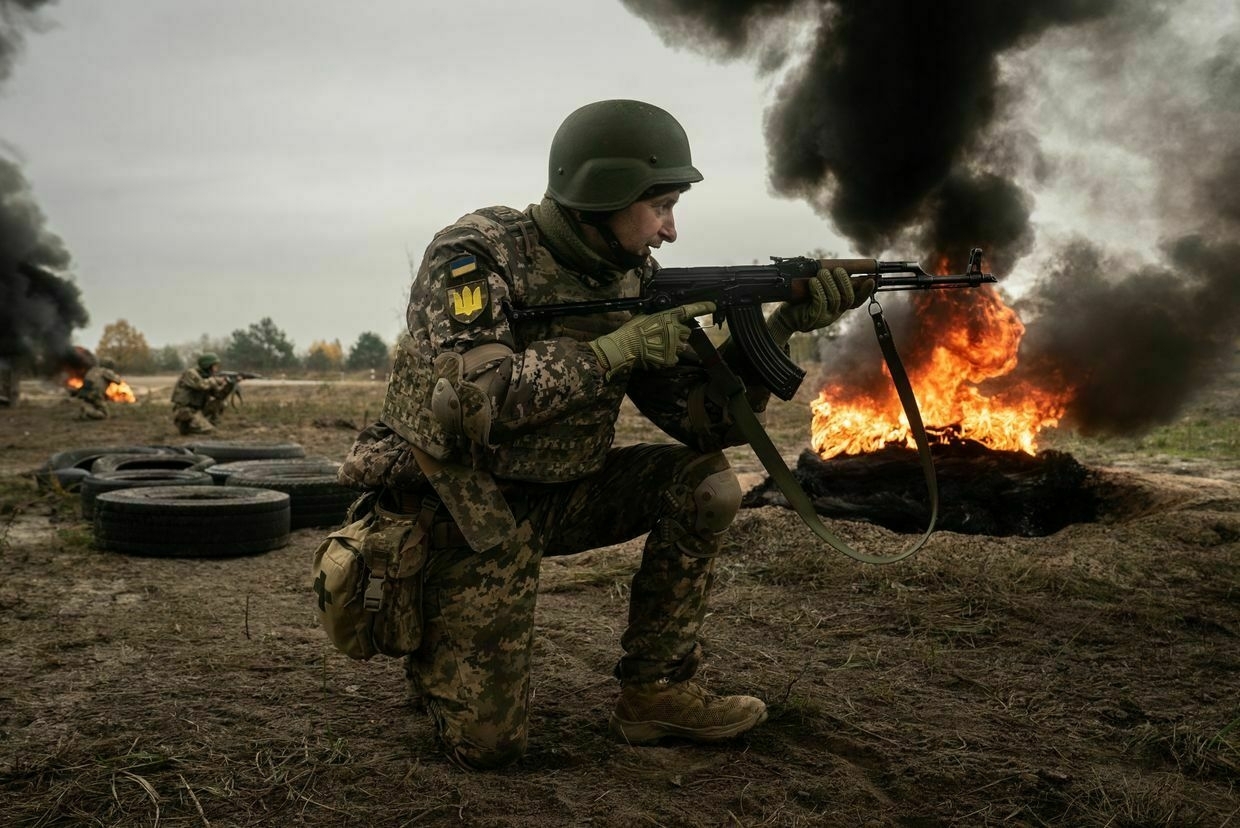
Winter slowdownUkraine’s success in stabilizing the front line over winter was far from a foregone conclusion.
Over summer and autumn 2024, Russia was taking more Ukrainian land with each successive month, culminating in November, when successive tactical breakthroughs saw Russian forces make rapid advances in the fields northwest of the city of Vuhledar in Donetsk Oblast, turning the defense of Kurakhove into a largely unfavorable pocket, which in turn led to difficult and chaotic retreats from the units stationed there.
With the onset of the new year, failing to enter Pokrovsk in a head-on assault like in the cities of Toretsk and Chasiv Yar thanks to a well-prepared Ukrainian defense, Russian forces attempted to enclose Pokrovsk and neighboring Myrnohrad with wide pincers on its eastern and western flanks, coming within five kilometers of the border of Dnipropetrovsk Oblast in the process.
These attempts were ultimately stymied by a stubborn Ukrainian defense in February, which has since conducted successful counterattacks in the area.
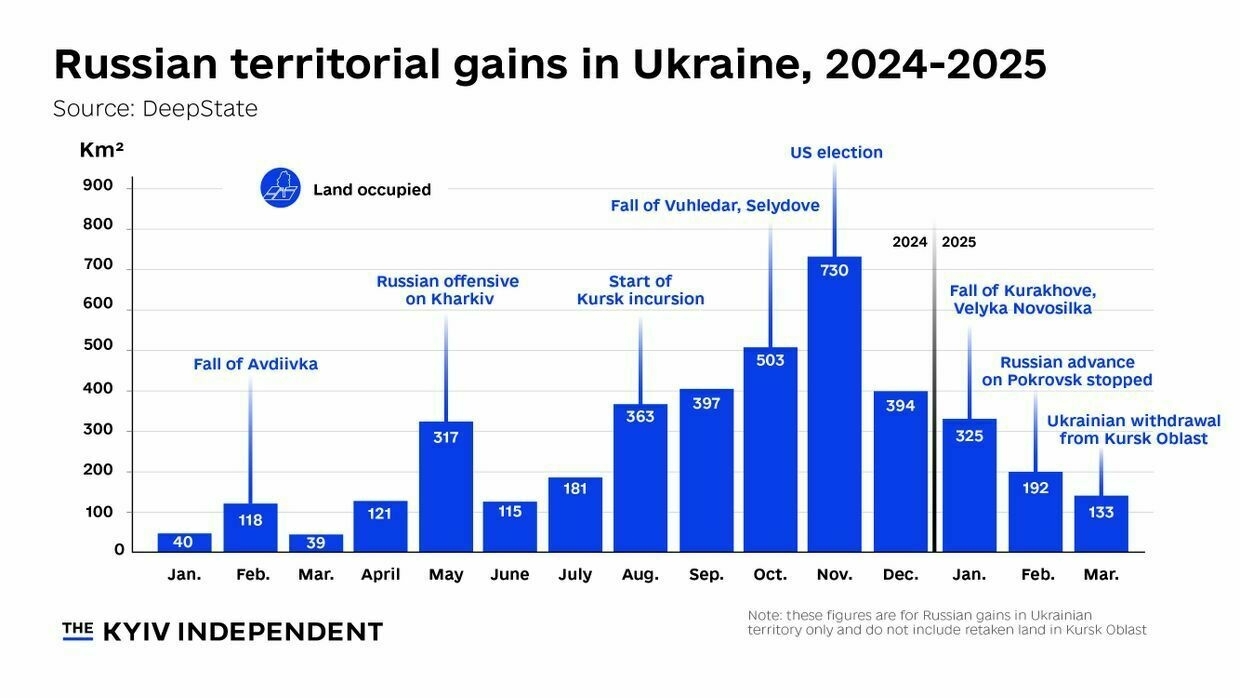
A visualization of the amount of Ukrainian territory occupied every month by Russian forces from the beginning of 2024 to March 2025. (Nazar al-Rifai/The Kyiv Independent) “High losses probably led to a degree of exhaustion and a need to regroup,” said John Hardie, deputy director of the Russia program at the Foundation for Defense of Democracies.
“Some of that may have been a dip in operational tempo as different units were repositioned in different directions. That said, the Russians are still recruiting at a really high rate, so the issue is not a lack of manpower."
Although Russia has slowed significantly near Pokrovsk, less-intense parts of the front have activated over March, threatening to flare up into larger offensives.
Taking advantage of a defense manned by less prepared Ukrainian units, Russian forces have managed to expand a bridgehead across the Oskil River north of Kupiansk in Kharkiv Oblast, while south of the city, a similar crossing was achieved on the Zherebets River, near the Ukrainian-held territory in Luhansk Oblast.
Russian forces push to secure ground west of Oskil River in Kupiansk sector, Ukraine saysKupiansk has remained a focal point of military activity for months, with Russia seeking to reclaim lost ground and create more favorable conditions for broader offensives in Kharkiv Oblast.The Kyiv IndependentThe Kyiv Independent news desk
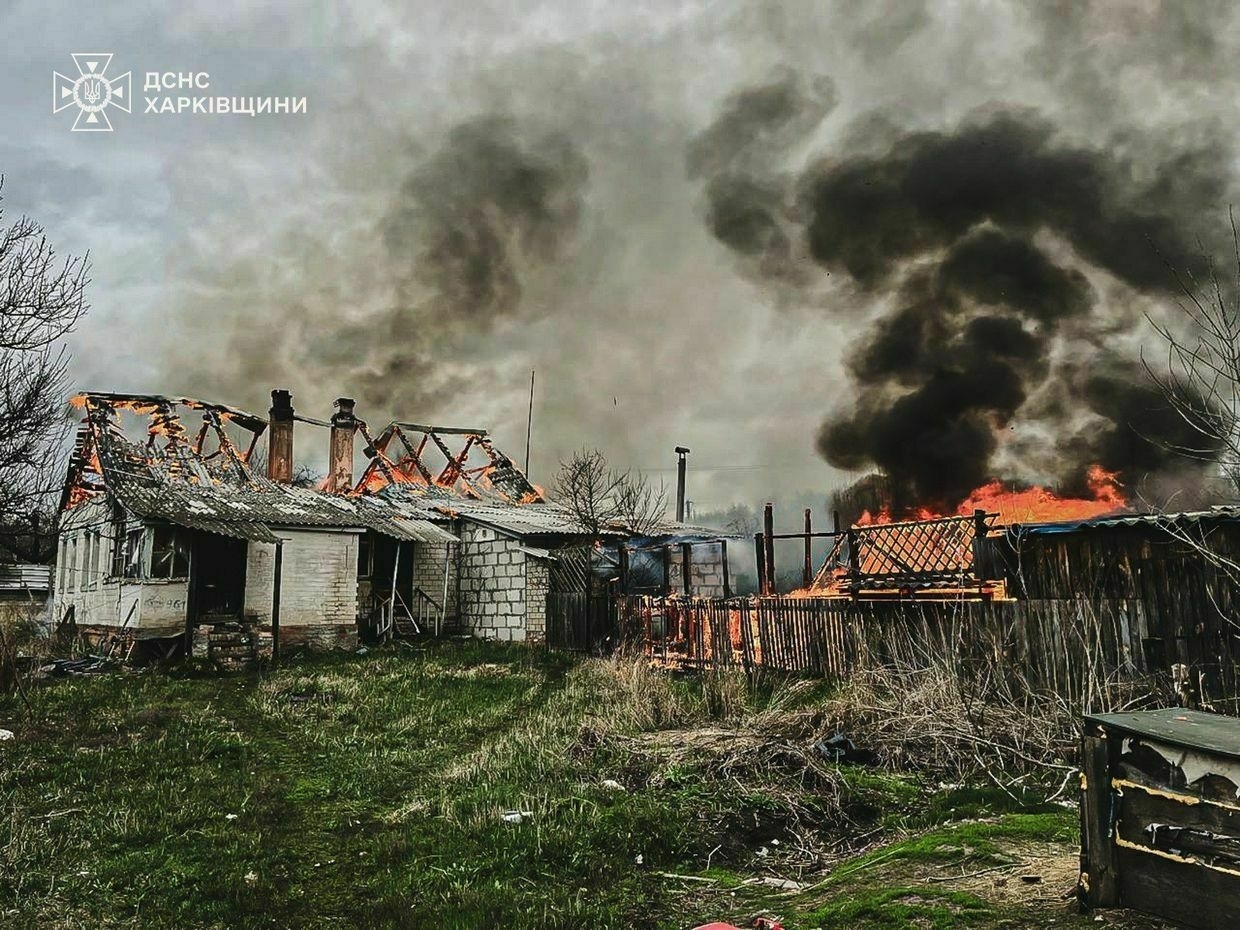
Angles of attack“If I had to guess, their main effort would still be around central Donetsk, Pokrovsk, Kostiantynivka directions, possibly seizing Toretsk and maybe even trying to advance toward Kramatorsk,” Emil Kastehelmi, a Finnish military analyst and member of the Black Bird Group open-source intelligence collective told the Kyiv Independent.
In keeping with long-held goals to conquer all of Donetsk Oblast, Moscow could choose to breathe new life into its offensive on the embattled city of Pokrovsk, which has been the hottest sector of the front line for the last six months.
Further south, Ukraine’s hold on the southern reaches of Donetsk Oblast continues to be chipped away by Russia following the fall of the cities of Kurakhove and Velyka Novosilka during winter.
In an early teaser of what could be a larger offensive push, Russia launched a large mechanized attack in the first days of April in the town of Andriivka, just west of Kurakhove, according to Ukraine’s 46th Airmobile Brigade, which reported three Russian tanks, eleven armored vehicles, and 58 personnel destroyed in the unsuccessful attempt to break through Ukrainian lines.
On March 31, Commander-in-Chief Oleksandr Syrskyi said that Russian forces had once again upped the intensity of attacks in the Pokrovsk sector, but so far without success, with Ukraine’s active defense in the area holding firm.
As warned by Zelensky, while keeping up the pressure in Donetsk Oblast, Russia could also look to create strategic dilemmas for Ukraine by launching new pushes across Ukraine’s northern border into Sumy or Kharkiv oblasts.
Alternatively, closer in line with Russia’s stated goals to control all four oblasts the Kremlin said it annexed in September 2022, an offensive from the south towards Zaporizhzhia is also possible, evidenced by a recent uptick in the fighting there reported by Kyiv in late March.
Moscow’s opening of a new front to spread the pressure on the Ukrainian defense would have precedent from last year’s spring campaign.
The cross-border offensive on Kharkiv in May 2024, while failing to break into artillery range of Ukraine’s second-biggest city, did force Kyiv to draw away some of its strongest brigades and drone units from the eastern front, likely helping Russia press the advantage in its push towards Pokrovsk.
Ultimately, where Russia chooses to move will be a question of priorities and forces available, argued Hardie.
“Despite the ill-fated Kharkiv offensive and attacks in other areas (in 2024), the Pokrovsk direction remained the main effort where Russia devoted the vast majority of its daily assaults and resources last year,” he said.
“It’s unlikely they could replicate what they’re doing in Pokrovsk in terms of tempo and the number of bodies they throw at Ukrainian positions in two places at once. They would have to prioritize one or the other."
The rise and fall of Ukraine’s Kursk gambitAs Ukraine’s seven-month-long incursion into Russia’s Kursk Oblast came to what appears to be its end, Ukrainian soldiers and military experts are questioning the operation’s goal and the long-term effect it will have on the war. Ukraine launched a surprise cross-border incursion into Russia’s Kurs…The Kyiv IndependentAsami Terajima
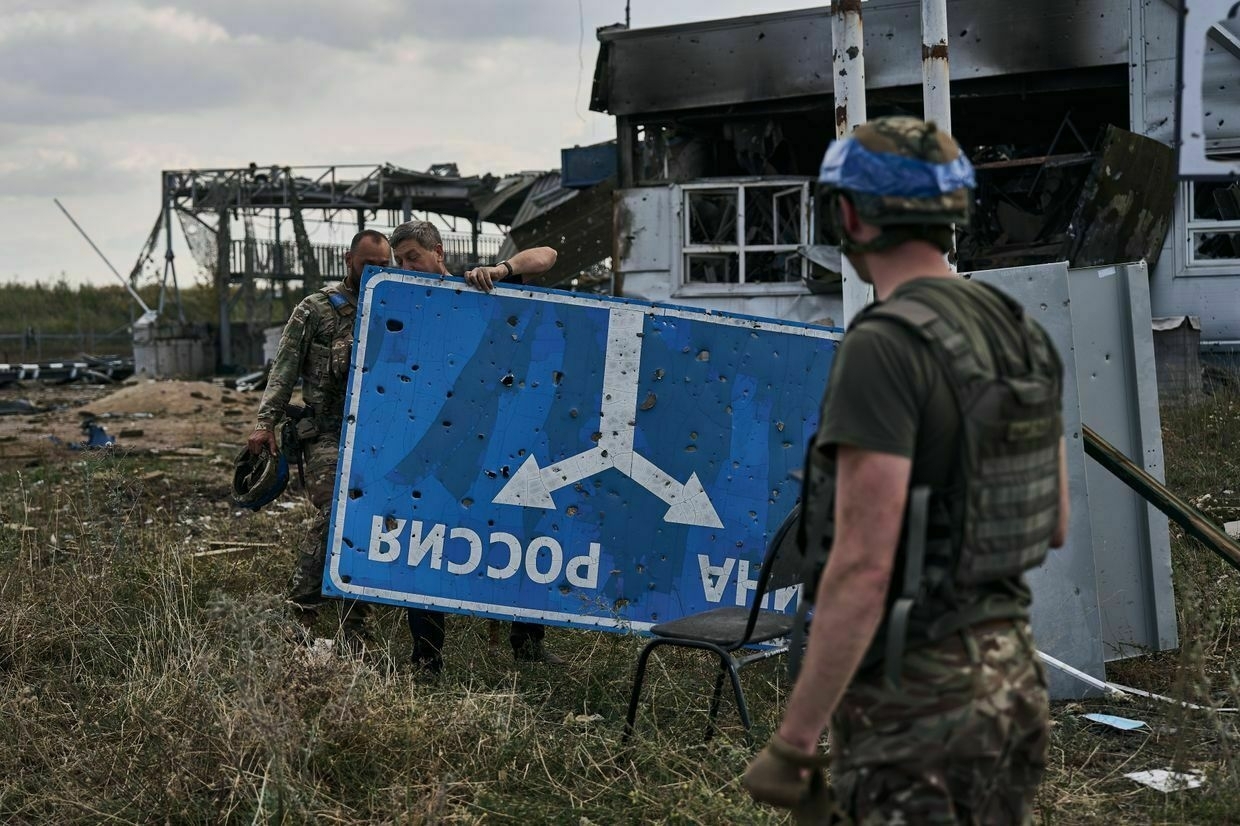
Key matchupsOn the tactical level, both sides are preparing for a spring campaign set to be defined by the brutal new reality of war under a sky completely saturated with drone-based reconnaissance and fire assets.
For both sides, the ability of enemy drones to control logistics routes up to and often beyond ten kilometers behind the zero line has meant that any movement in this zone, whether of a vehicle or just an individual soldier, could become the target of multiple high-precision strikes just a few minutes after being noticed.
The proliferation of electronic warfare (EW) systems has provided serious relief for vehicles driving near the front line over 2024, but the increased use by both sides of suicide drones with a hard fiber optic connection has rendered EW far from a complete solution.
Beyond the stereotypical image of muddy spring ground complicating the use of armor, the warming weather and return of foliage to the trees present challenges and opportunities for both sides.
Overall, the most felt changes may not be the weather itself but simply the continued march of drone saturation, where seismic changes in scale, technology, and danger tend to occur every few months.
“For the attacker, large mechanized troop concentrations become really difficult, especially given the drone warfare situation,” said Kastehelmi, “and this forces the Russians to continue using infantry-heavy tactics."
“At the same time, Ukrainian forces continue to stubbornly defend certain areas even as the Russians advance on the flanks, making their supply lines more and more vulnerable to Russian drone strikes."
Ultimately, with both sides throwing everything at drone development, the deciding factor is likely to be the asymmetrical manpower dimension.
For Moscow, the question is if Russia can continue to feed enough men into its wave-like infantry assault tactics on the same scale as in 2024, while for Kyiv, whether they can mobilize and train enough combat-effective infantry to patch up holes in the front line and maybe even allow for the rotation of units.
“Ukraine does a really good job of using FPVs and heavy bombers, and drone-laid mines to degrade Russian assault groups, often before they reach Ukrainian positions, helping compensate for the shortage of infantry,” said Hardie.
“I don’t expect the Russians to start making rapid gains. They have clearly shown they are incapable of an operational-level breakthrough, and I don’t expect that to change."
All on the lineWith the Trump administration’s attempts to achieve a limited ceasefire failing to show any signs of getting Moscow to stop on the battlefield, the results of the spring campaign could bring the most decisive weight on to the balance of power between Russia and Ukraine.
“Putin believes he has the upper hand on the battlefield and wants to press that advantage despite the peace talks initiated by Donald Trump,” said Hardie.
“He not only wants to gain more territory but also more leverage at the negotiating table."
If Moscow can reverse the current trajectory and once again begin to overstretch and overwhelm the Ukrainian defense in several sectors, the political choice to refuse a future problematic peace deal and keep fighting without U.S. support could be a lot more difficult to take.
“The manpower issue remains,” said Kastehelmi, “and there is significant uncertainty regarding the foreign and security policy environment."
If, however, Ukrainian forces are able to hold firm along the front line, fixing mistakes and systemic problems leading to the manpower crisis while continuing to increase the efficiency of its drone units, Kyiv’s position will be a lot stronger.
As Russia refuses to accept ceasefire, will Trump pressure Moscow?Three weeks ago, Ukraine and the U.S. agreed to implement a full 30-day ceasefire. Russia declined to do so, issuing a list of demands instead. On April 4, Russia hit a residential neighborhood in the city of Kryvyi Rih with ballistic missiles and drones, killing 19 people, including nineThe Kyiv IndependentOleg Sukhov
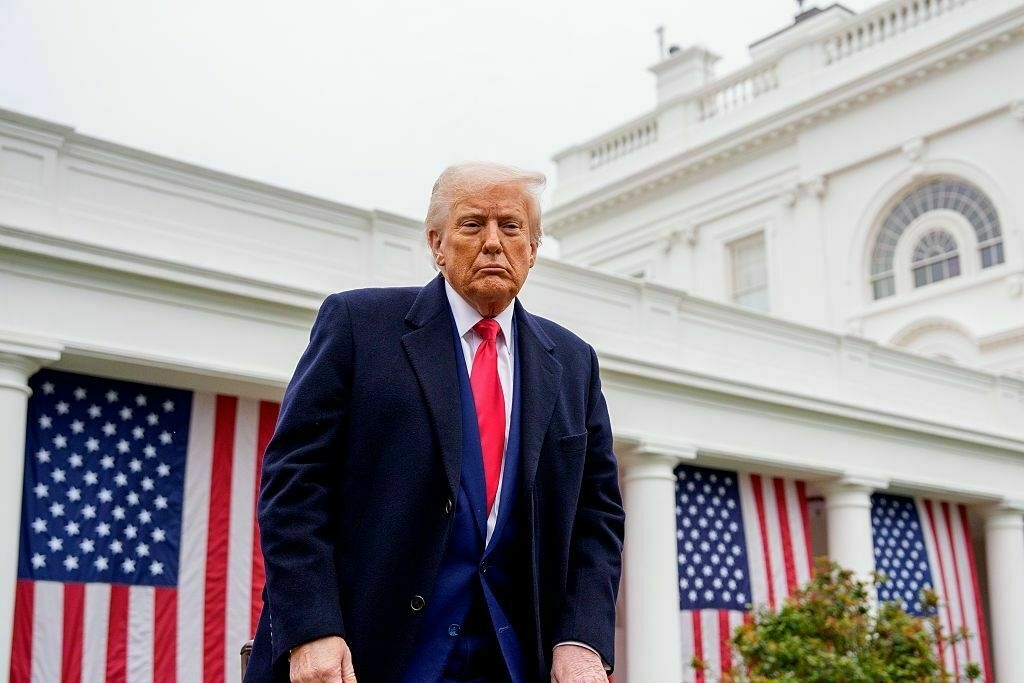
-
Ukraine war latest: Russia claims capture of Sumy Oblast village, Ukraine denies
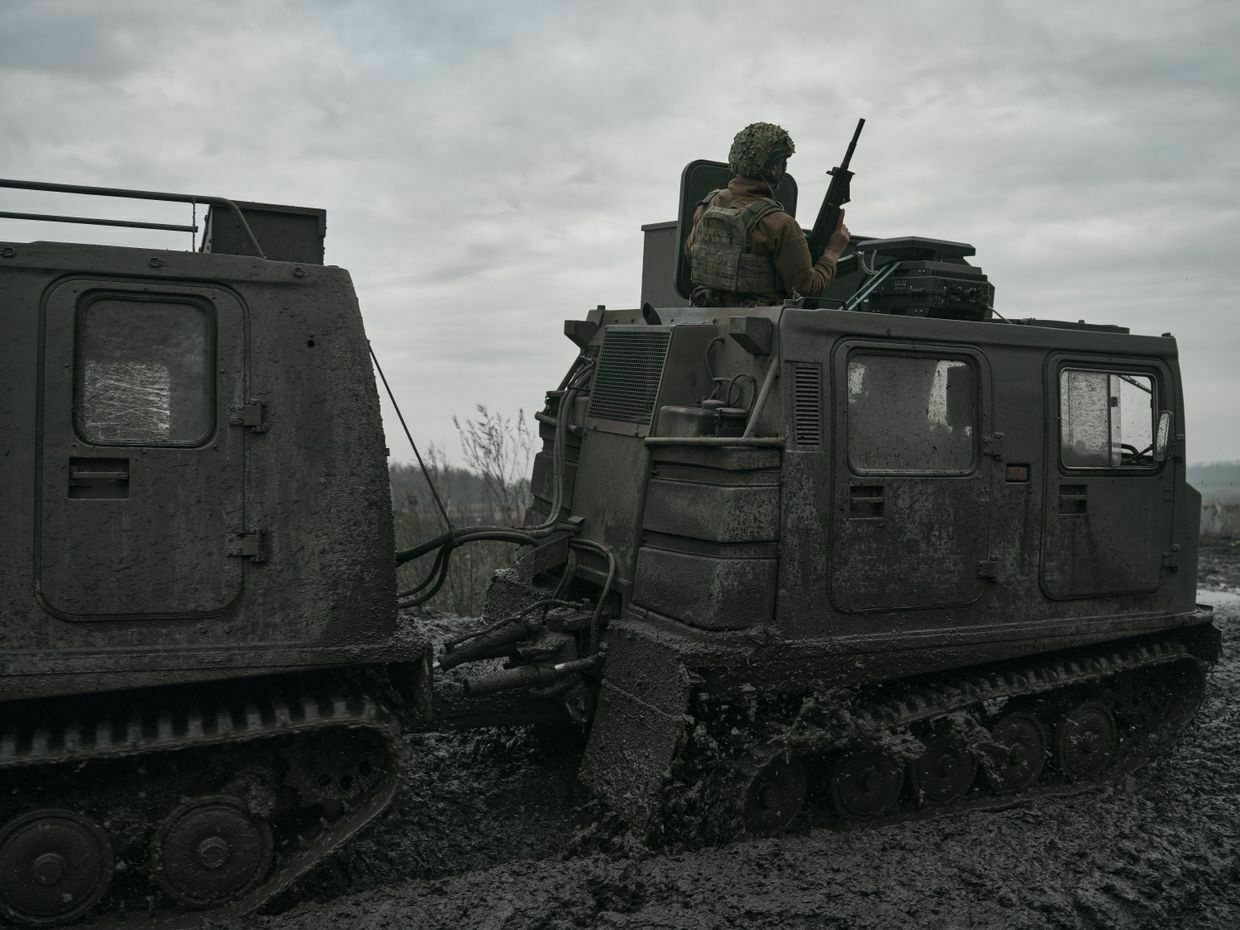
Key developments on April 7:
- Russia claims capture of Sumy Oblast village, Ukraine calls it “disinformation campaign”
- Russian forces push to secure ground west of Oskil River in Kupiansk sector, Ukraine says
- Over 77,000 Russian targets hit, destroyed in March using drones, Ukraine’s commander says
- Indian component found in Russian weapon for first time, Ukraine’s intelligence says
Russia claimed on March 6 that its forces had seized the village of Basivka in Sumy Oblast, but Ukraine’s State Border Guard Service denied the report, describing it as part of a “disinformation campaign."
The Russian Defense Ministry said units from its “Sever” (North) military grouping captured the settlement, located roughly 29 kilometers northeast of Sumy city and near the Russian border.
Russia’s state-run news agency TASS reported the seizure could disrupt supply lines to Ukrainian forces still operating in Russia’s Kursk Oblast.
Ukrainian officials rejected the claim. “Russia continues its disinformation campaign regarding the seizure of settlements in Sumy Oblast or the breakthrough of the border,” border guard spokesperson Andrii Demchenko told Ukrainian Pravda.
Demchenko confirmed ongoing Russian attempts to send small assault groups across the border in the Novenke-Basivka direction, but said these groups are being “destroyed to the maximum extent possible” by Ukraine’s Armed Forces.
Basivka remains marked as “gray zone” on the DeepState monitoring map, indicating contested or unclear control.
President Volodymyr Zelensky warned in an interview with Le Figaro published on March 26 that Russia is preparing for a new offensive in Sumy and Kharkiv oblasts this spring.
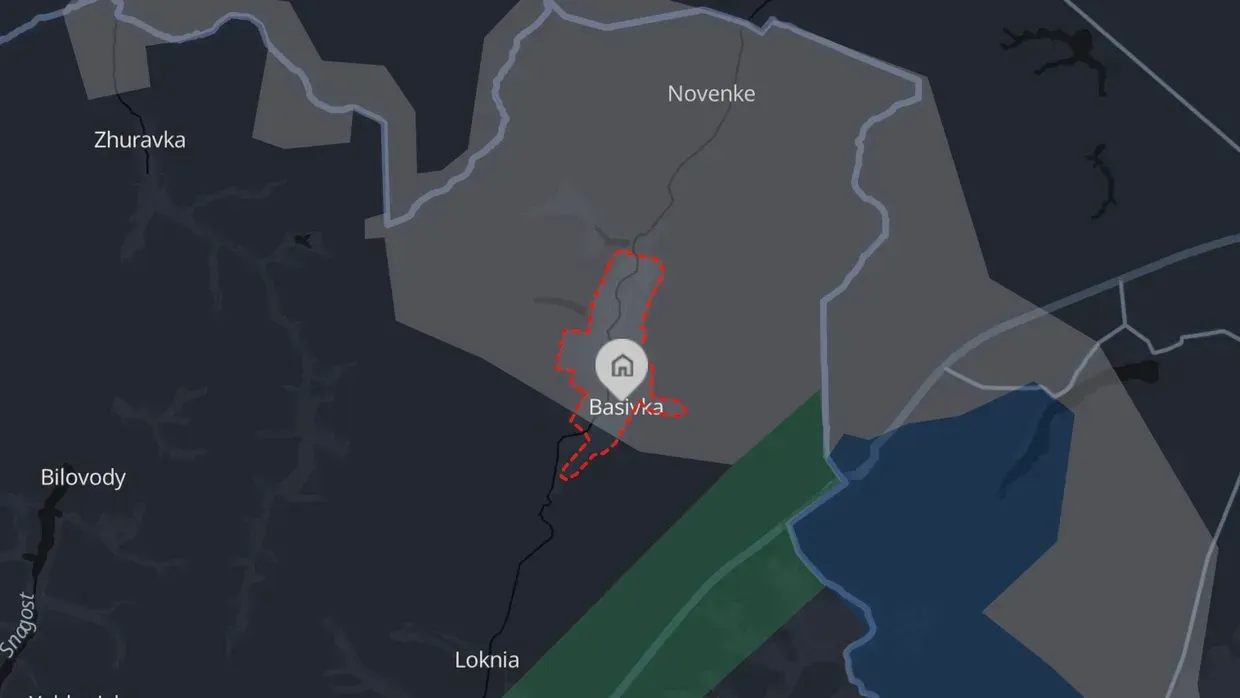
The estimated Russian advance in the Sumy Oblast, Ukraine, as of April 6, 2025, according to DeepState map. A white symbol marks the village of Basivka. (DeepState/OpenStreetMaps) Russian forces push to secure ground west of Oskil River near Kupiansk, Ukraine saysRussian troops are stepping up efforts to gain territory on the western bank of the Oskil River, launching intensified assaults in the Kupiansk direction, Kharkiv Oblast, Ukraine’s military said April 7.
Kupiansk has remained a focal point of military activity for months, with Russia seeking to reclaim lost ground and create more favorable conditions for broader offensives in Kharkiv Oblast.
According to the Operational and Strategic Group of Troops “Khortytsia,” Ukrainian forces repelled multiple infantry attacks near the villages of Kamianka, Petropavlivka, Pishchane, Nadiia and Zahryzove.
In the area around the village of Bohuslavka, Russian units — backed by armored vehicles and quad bikes — attempted to break through Ukrainian defensive lines, the military said.
Russian forces are reportedly trying to transfer additional manpower and supplies across the Oskil River, aiming to strengthen their position on the western side and secure logistics routes for future operations. Ukraine’s military says efforts to prevent this crossing remain a priority.
“Our troops are taking active measures to prevent further advances by enemy forces,” the command reported.
As Russia refuses to accept ceasefire, will Trump pressure Moscow?Three weeks ago, Ukraine and the U.S. agreed to implement a full 30-day ceasefire. Russia declined to do so, issuing a list of demands instead. On April 4, Russia hit a residential neighborhood in the city of Kryvyi Rih with ballistic missiles and drones, killing 19 people, including nineThe Kyiv IndependentOleg Sukhov
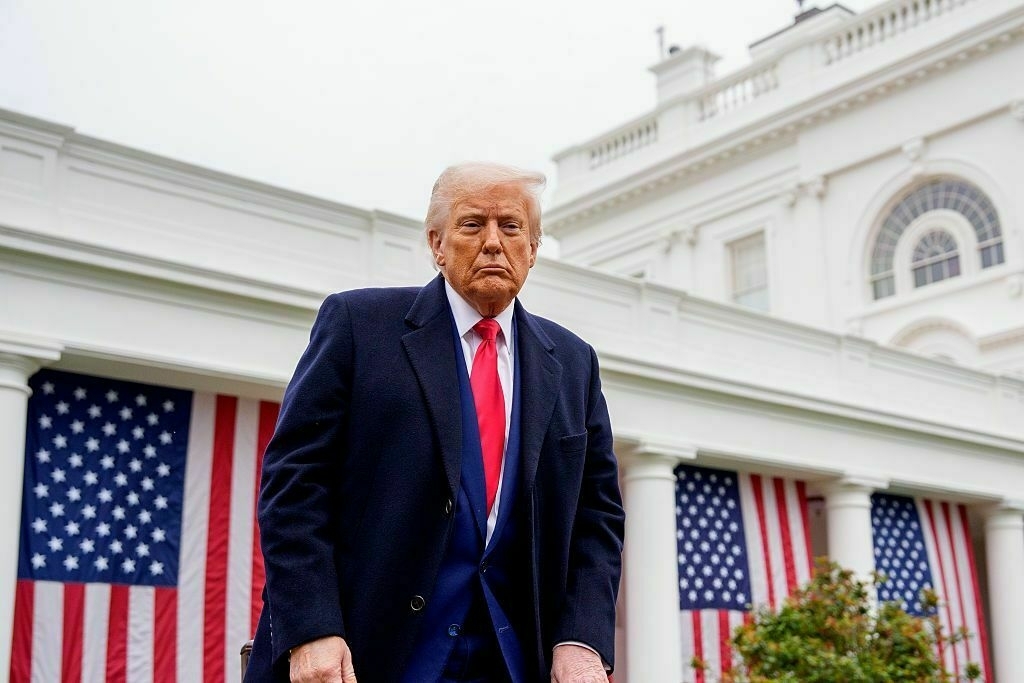
Over 77,000 Russian targets hit, destroyed in March using drones, Ukraine’s commander saysUkrainian soldiers hit and destroyed in March more than 77,000 Russian targets using drones of various types, Commander-in-Chief Oleksandr Syrskyi said on April 7.
The number of targets hit is 10% higher than in February, according to Syrskyi. The Kyiv Independent could not independently verify these claims.
Syrskyi called boosting the combat capabilities of unmanned systems on the battlefield one of Ukraine’s key priorities.
“By increasing the role of drones, we are saving the lives of our defenders,” Syrskyi added.
Defense Ministry approves new Ukrainian-made D-21-12R ground robot for military useEquipped with a large-caliber machine gun, the robot is capable of conducting surveillance, patrolling, providing fire support to the Ukrainian military, and targeting Russian lightly armored vehicles, the Defense Ministry said.The Kyiv IndependentKateryna Denisova
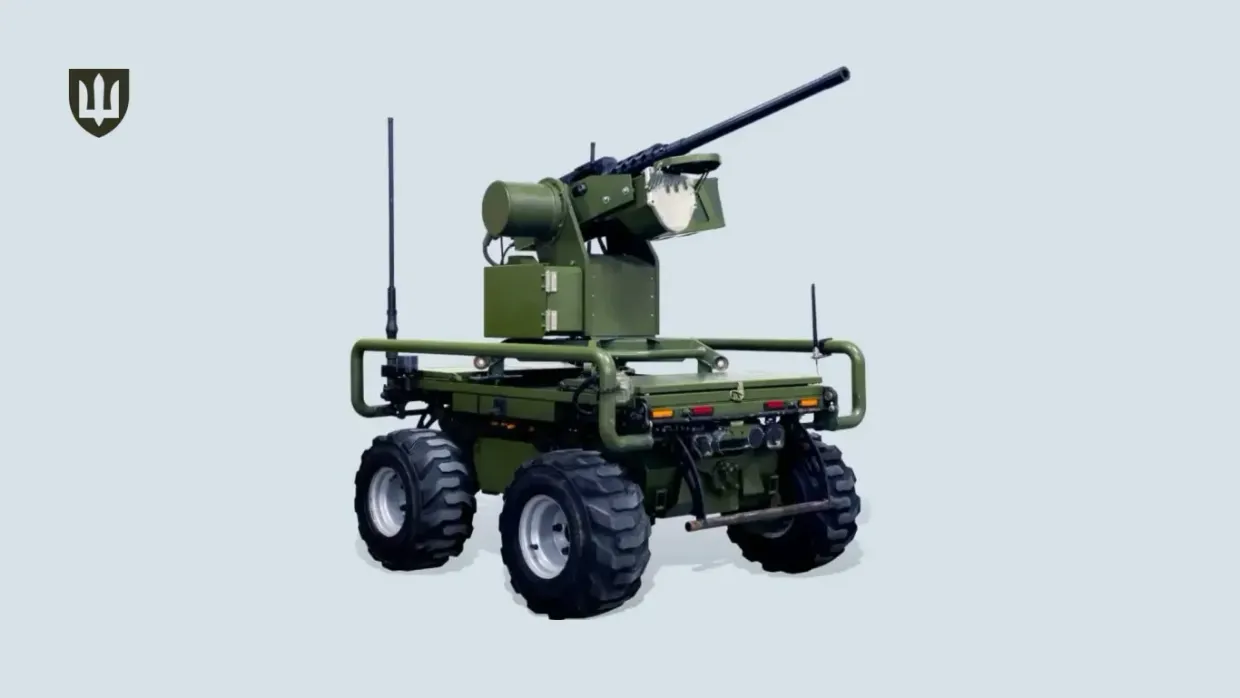
Indian component found in Russian weapon for first time, Ukraine’s intelligence saysAn Indian-made component was identified in a Russian weapon system for the first time, while nearly all American-made parts have been phased out, Ukraine’s military intelligence (HUR) reported on April 7.
“For the first time, a component made in India — a clock buffer from Aura Semiconductor — was found in a Russian weapon,” HUR said in a Telegram post.
The discovery came as HUR documented nearly 200 newly identified parts across six types of Russian weaponry.
These include the CRP antenna from the Russian-modified Shahed drone, North Korea’s KN-24 ballistic missile, the onboard computer in the X-47 Kinzhal missile, and several reconnaissance and attack drones — including the Supercam S350, Gerbera, and Zala.
According to HUR, only two American chips remain in the latest CRP antenna design of the Geran-2, illustrating Russia’s shift toward components from countries not enforcing sanctions.
In previous drone variants, antennas labeled in Chinese featured 13 out of 15 components made by Chinese firms, including key signal-processing chips from the Beijing Microelectronics Technology Institute.
For years, Russia has served as India’s top arms supplier. However, the imposition of international sanctions has forced India to diversify its defense procurement and deepen its ties with Western arms producers.
Note from the author:
Ukraine War Latest is put together by the Kyiv Independent news desk team, who keep you informed 24 hours a day, seven days a week. If you value our work and want to ensure we have the resources to continue, join the Kyiv Independent community.
US increasingly polarized over Ukraine support as Trump’s ‘America First’ deepens party divideThe data also showed broader disagreement over America’s global role.The Kyiv IndependentTim Zadorozhnyy
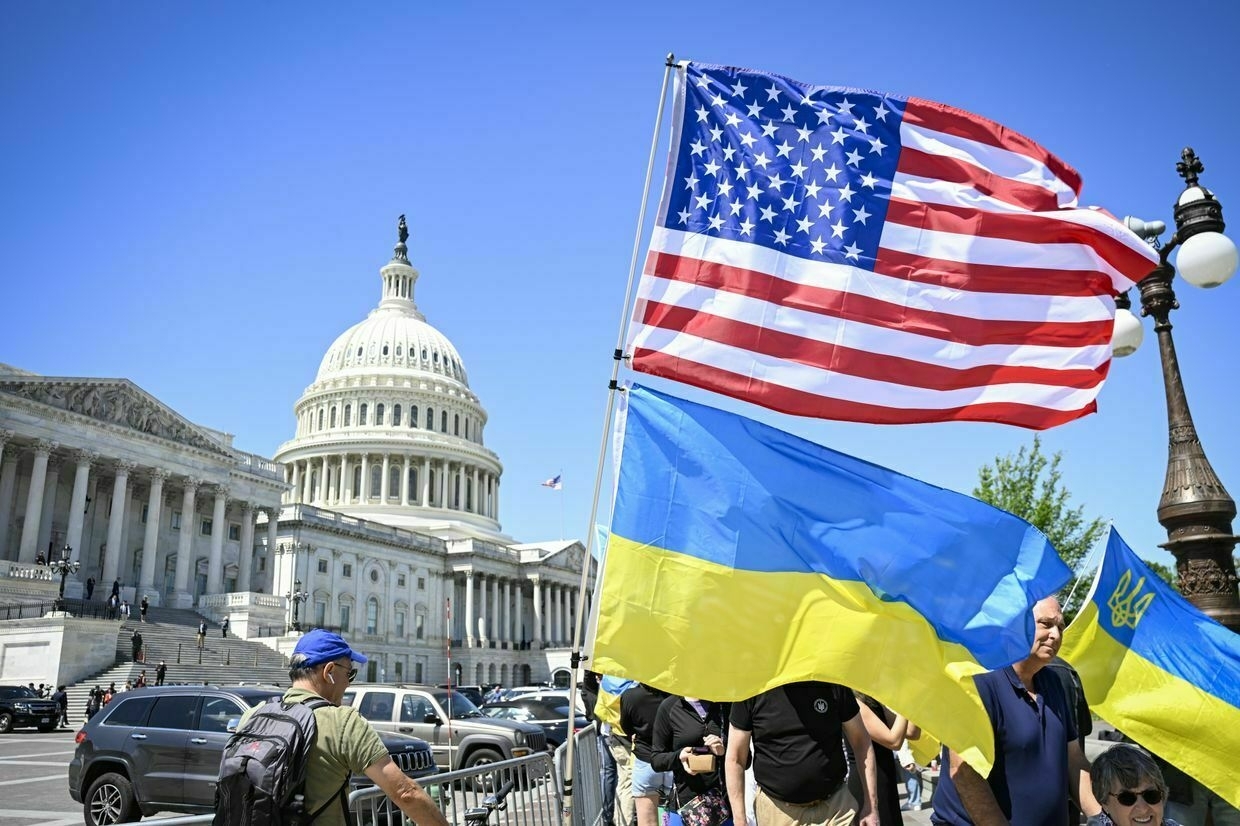
-
Trump "Doesn’t Like" Continuation of Russian Missile Strikes | Wrap-up
-
Presidential candidate Victor Ponta vows to end Ukrainian grain exports via Romania if elected
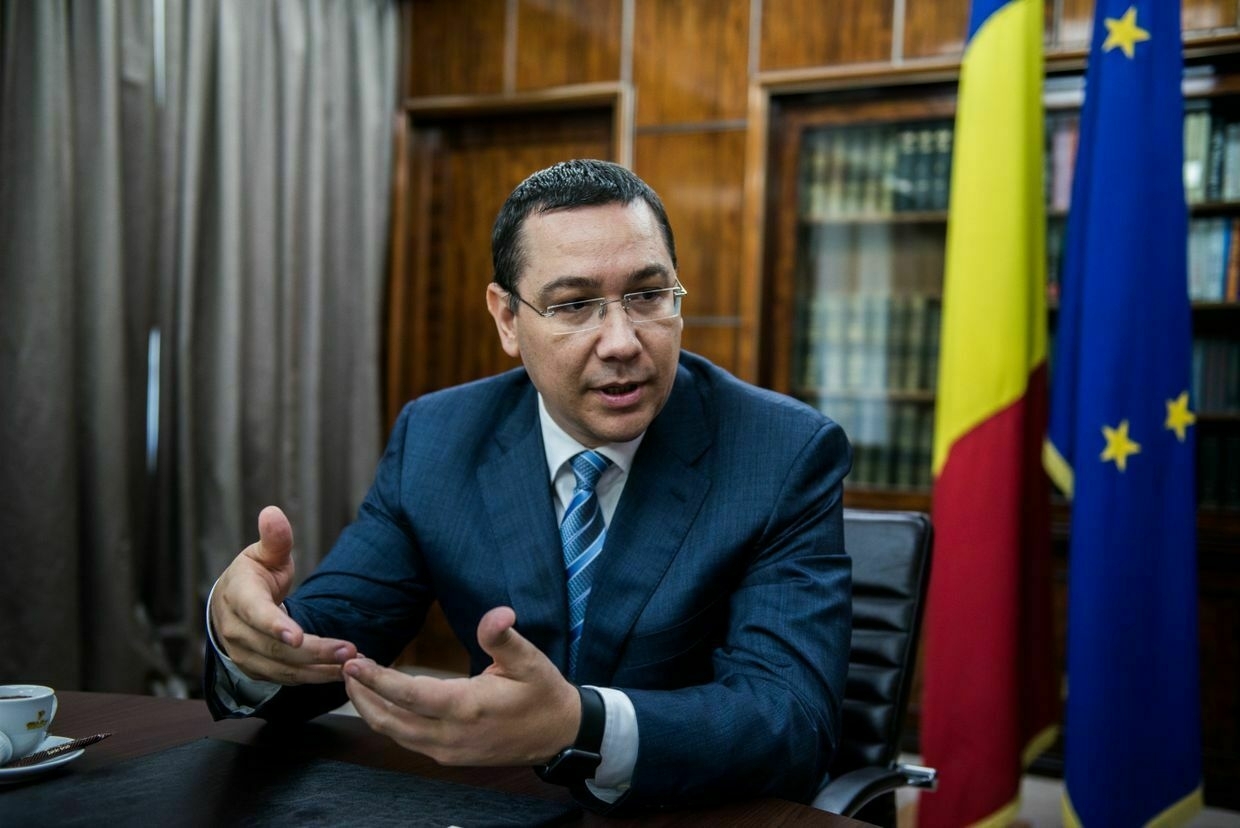
If elected president, former Prime Minister Victor Ponta told Reuters he will ban the export of Ukrainian grain through the country’s Black Sea ports to protect local farmers.
Bucharest plays a crucial role in Ukrainian exports amid Russia’s threats to the Black Sea maritime trade, shipping around 29 million tones of Ukraine’s produce.
“There has been a policy of favoring Ukrainian grain in terms of access to port facilities in recent years, at the detriment of Romanian grain, and Romanian farmers were greatly affected by it,” Ponta said.
In 2024, Romanian farmers asked the government to advocate for import limits on Ukrainian agriculture products, protesting the economic impacts of a free trade agreement that have sparked worries about uneven competition and risks to domestic production.
Yet, the presidential candidate said that he would support other measures already in place to support Ukraine, including weapons transit and training for Ukrainian pilots.
He said that Romania can defend neighboring Moldova in case of a Russian attack but could not do so for Ukraine or any other country.
In light of President Donald Trump’s U-turn in foreign policy, Ponta said that he backs “radical change” taking place in the U.S.
The re-run of Romania’s presidential elections is set for May 8 after the scheduled vote in November was annulled due to allegations of Russian interference favoring far-right candidate Calin Georgescu.
He was barred from participating in the presidential election re-run.
Victor Ponta, 52, served as a Romanian prime minister between 2012-2015, representing the Social Democratic Party (PSD). He resigned after public outrage over a deadly nightclub fire.
An opinion poll conducted by polling institute Verifield showed that Ponta has a chance to enter the run-off facing far-right candidate George Simion.
As Russia refuses to accept ceasefire, will Trump pressure Moscow?Three weeks ago, Ukraine and the U.S. agreed to implement a full 30-day ceasefire. Russia declined to do so, issuing a list of demands instead. On April 4, Russia hit a residential neighborhood in the city of Kryvyi Rih with ballistic missiles and drones, killing 19 people, including nineThe Kyiv IndependentOleg Sukhov
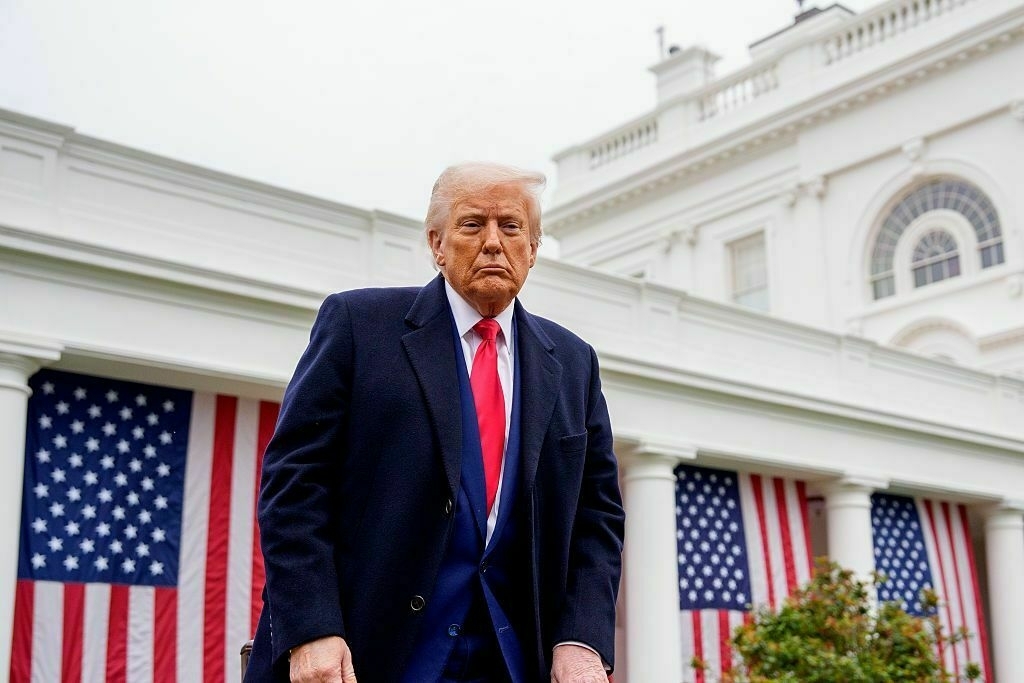
-
No talks yet with Trump administration on Russian sanctions relief, EU envoy says
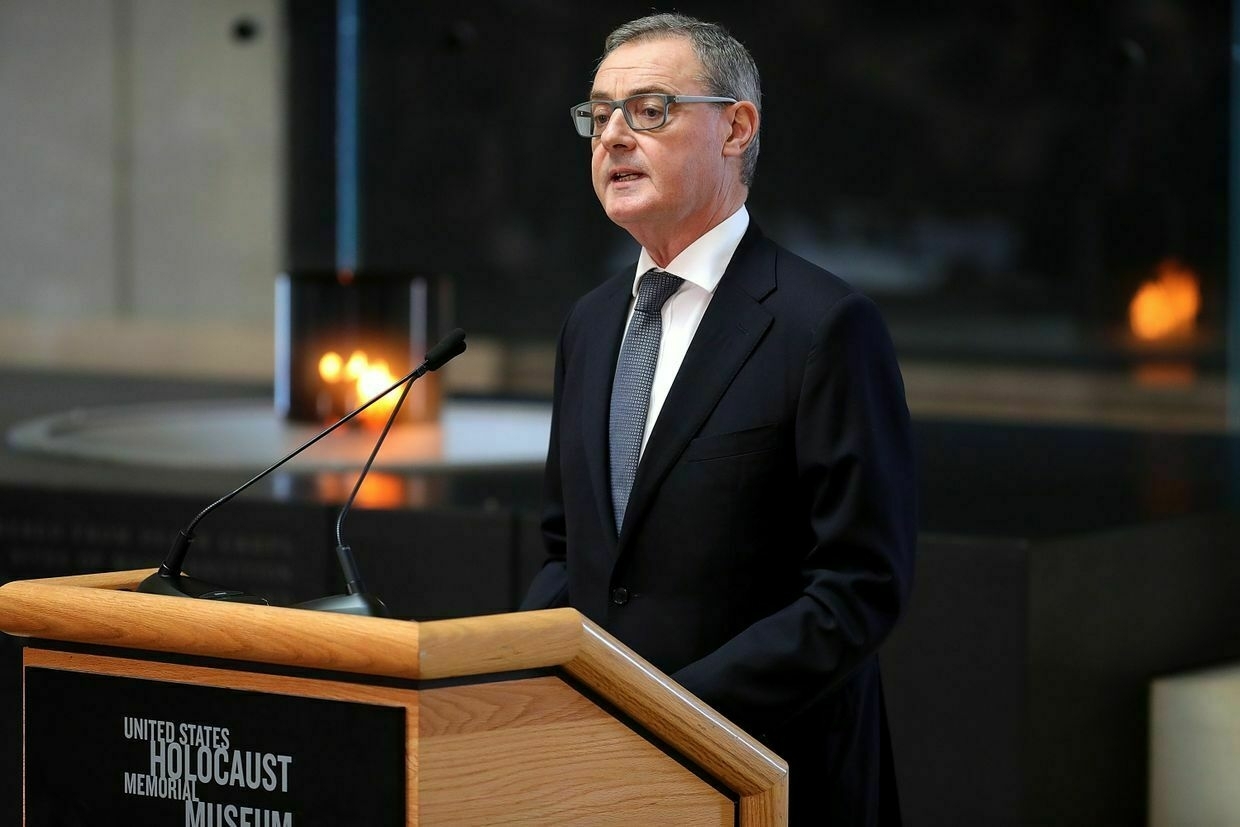
The European Union has not yet had a discussion with the U.S. about any easing of sanctions imposed on Russia as part of a potential ceasefire deal, David O’Sullivan, the bloc’s sanctions envoy, said in an interview with Bloomberg TV, published on April 7.
The U.S., the EU, and other international partners have imposed strict sanctions against Russia since the start of the full-scale invasion in 2022, aiming to cut short its ability to wage war.
According to O’Sullivan, Washington has not yet contacted the EU regarding talks on Russia’s request for sanctions relief, which is one of Moscow’s preconditions to a U.S. ceasefire proposal in the Black Sea.
Following two days of talks in Saudi Arabia, Russia, Ukraine and the U.S. on March 25 have agreed to a ceasefire in the Black Sea and a ban on energy infrastructure strikes. However, Moscow insists that the Black Sea ceasefire will take effect only if the West lifts sanctions on Rosselkhozbank and other financial institutions linked to food trade, restoring their access to the SWIFT payment system.
Washington agreed to help facilitate Russian food and fertilizer exports. But such a step would require a unanimous vote of the EU member states.
O’Sullivan described sanctions as “a very important point of leverage in any negotiation with Russia.”
“It should be used, but used judiciously and slowly and only in the context of arriving at a solution which is lasting and sustainable peace,” he added.
Despite Moscow’s demands, the EU has reportedly started preparing its 17th package of sanctions against Russia.
According to EU’s spokeswoman for Foreign Affairs and Security Policy Anitta Hipper, Russia’s “unconditional withdrawal” from Ukraine is one of the main preconditions for changing or lifting EU sanctions.
Ukraine has already agreed to a U.S.-proposed full 30-day ceasefire, saying on March 11 that Kyiv is ready to take such a step if Russia also agrees to the terms. So far, Russia has refused.
Russia has found yet another excuse not to agree to a ceasefire in Ukraine, and it’s not even a new one“These questions are hanging in the air, and so far, no one has given answers to them,” Kremlin spokesperson Dmitry Peskov said.The Kyiv IndependentTim Zadorozhnyy
